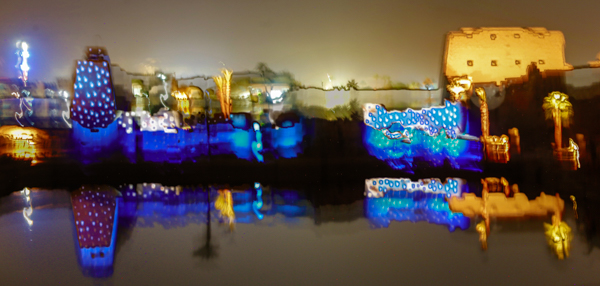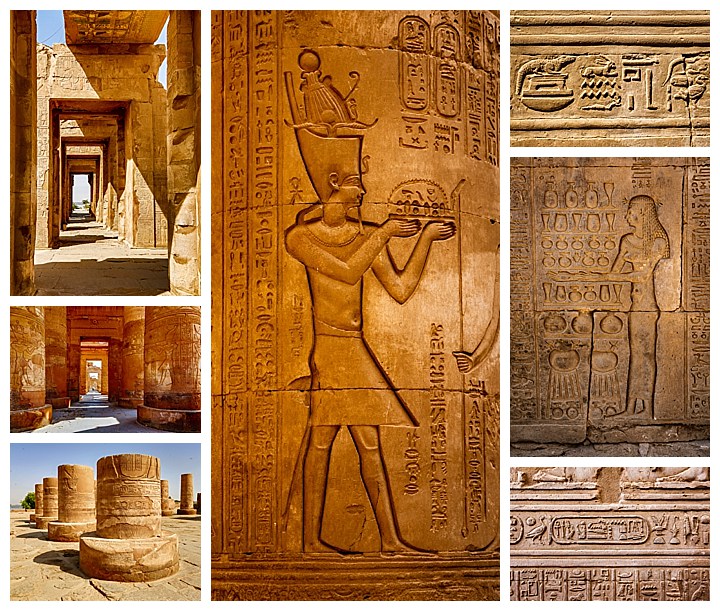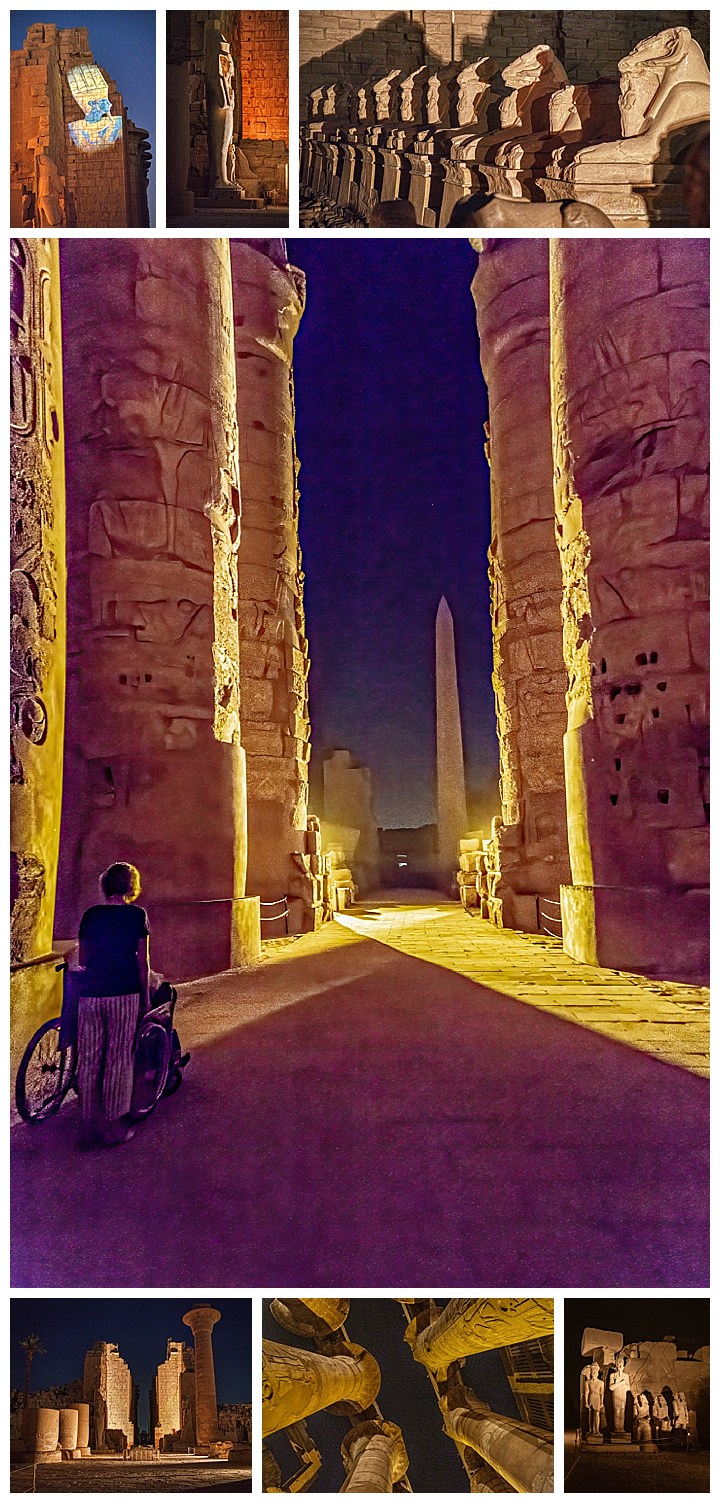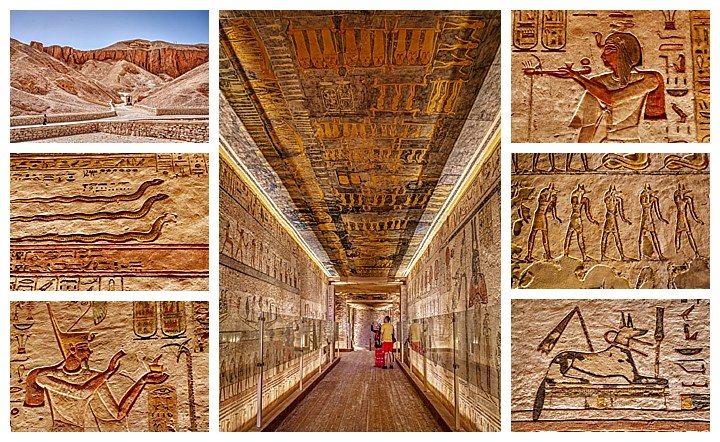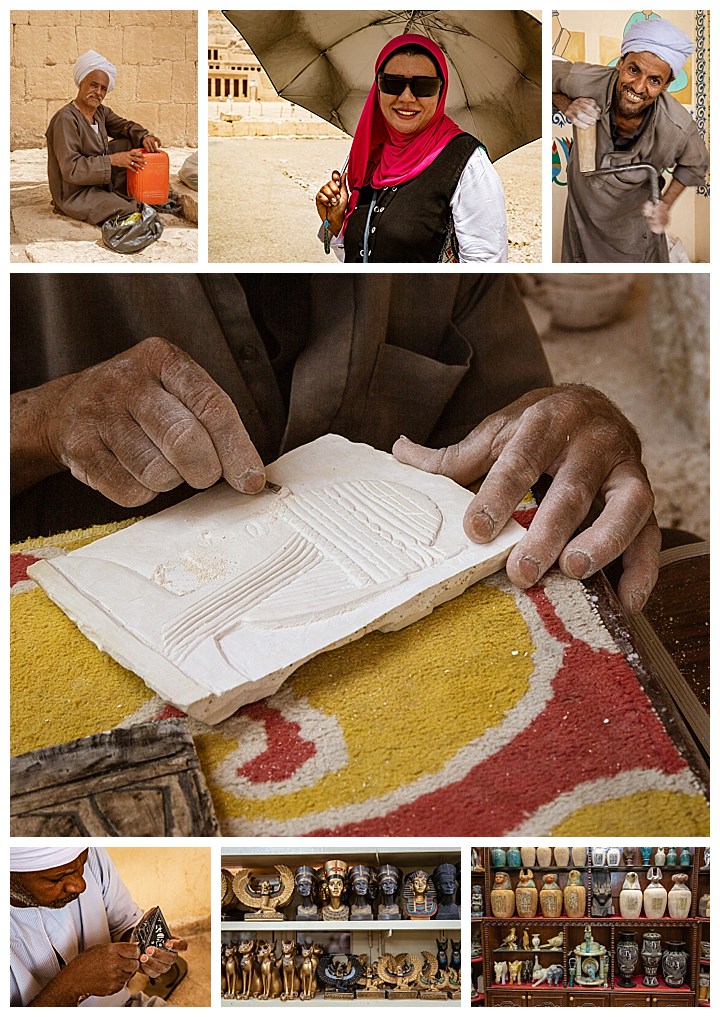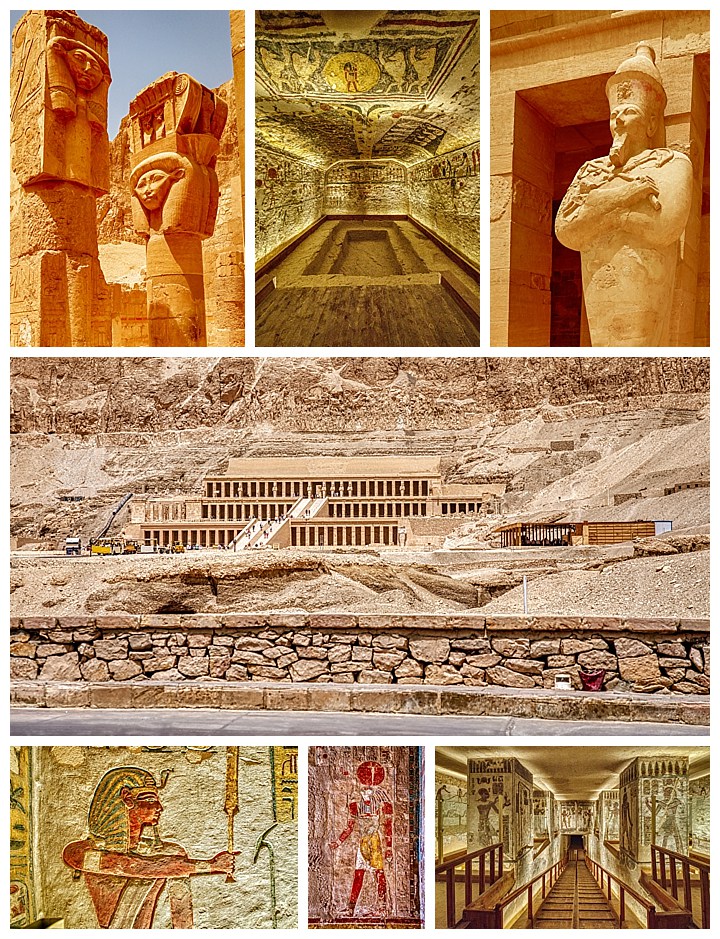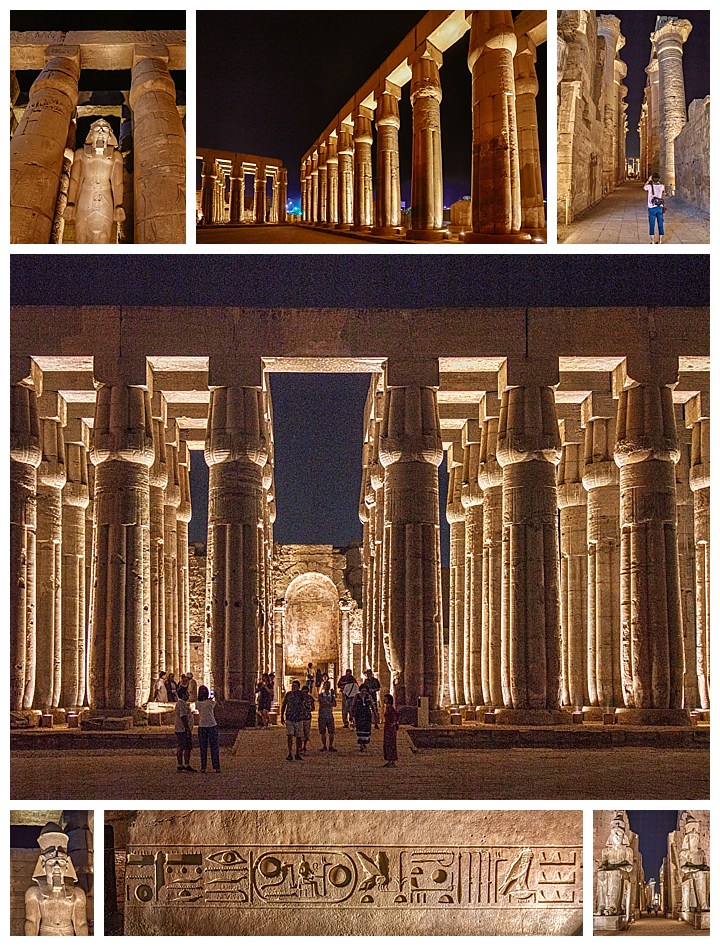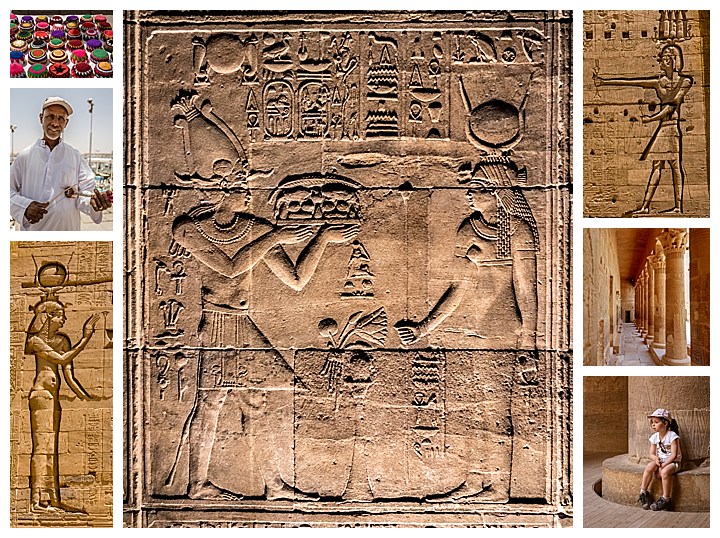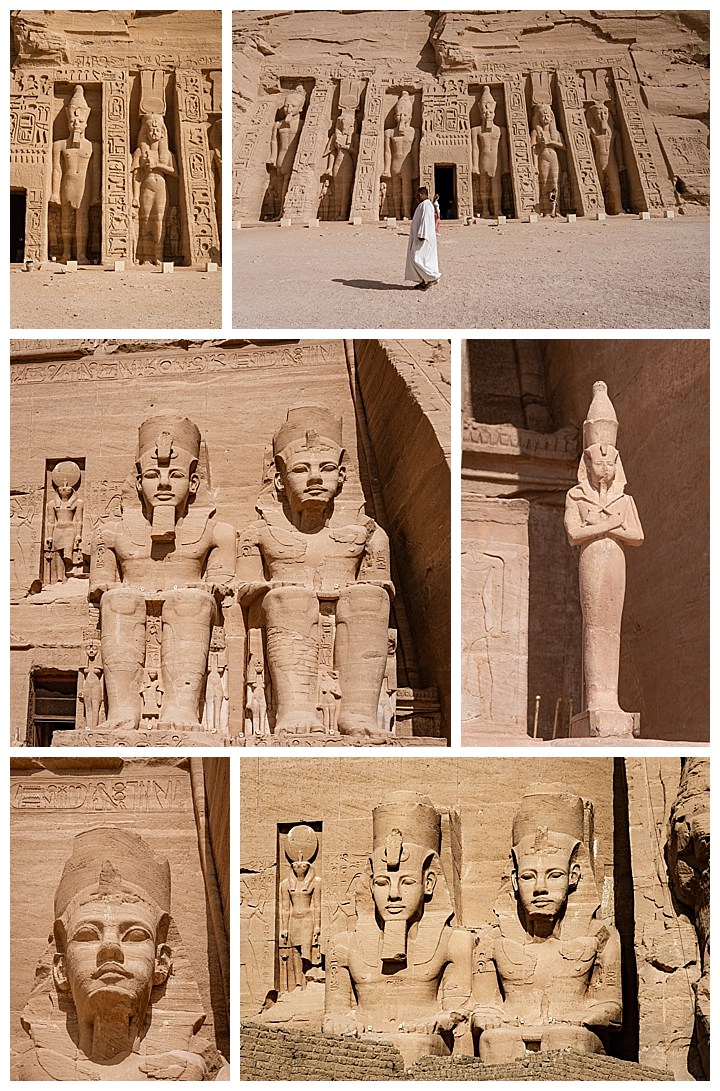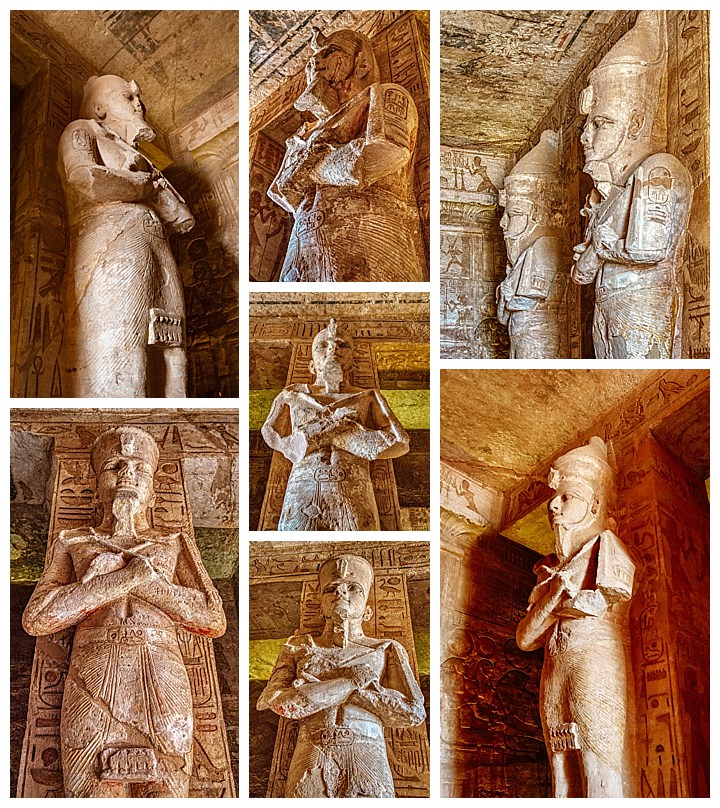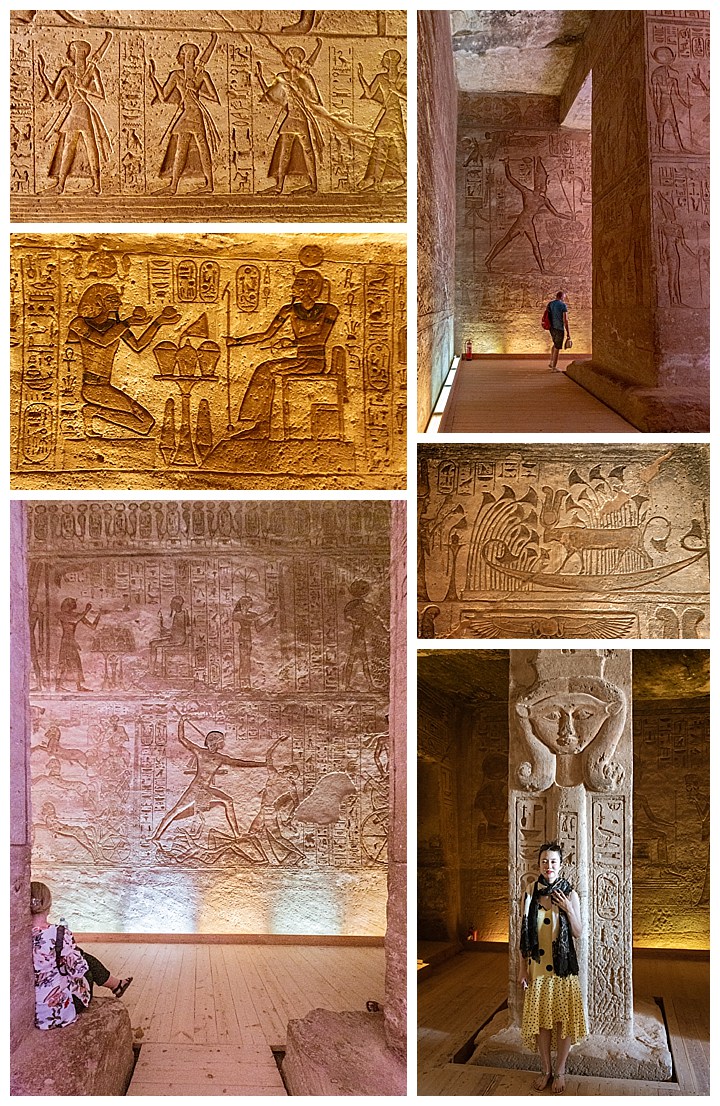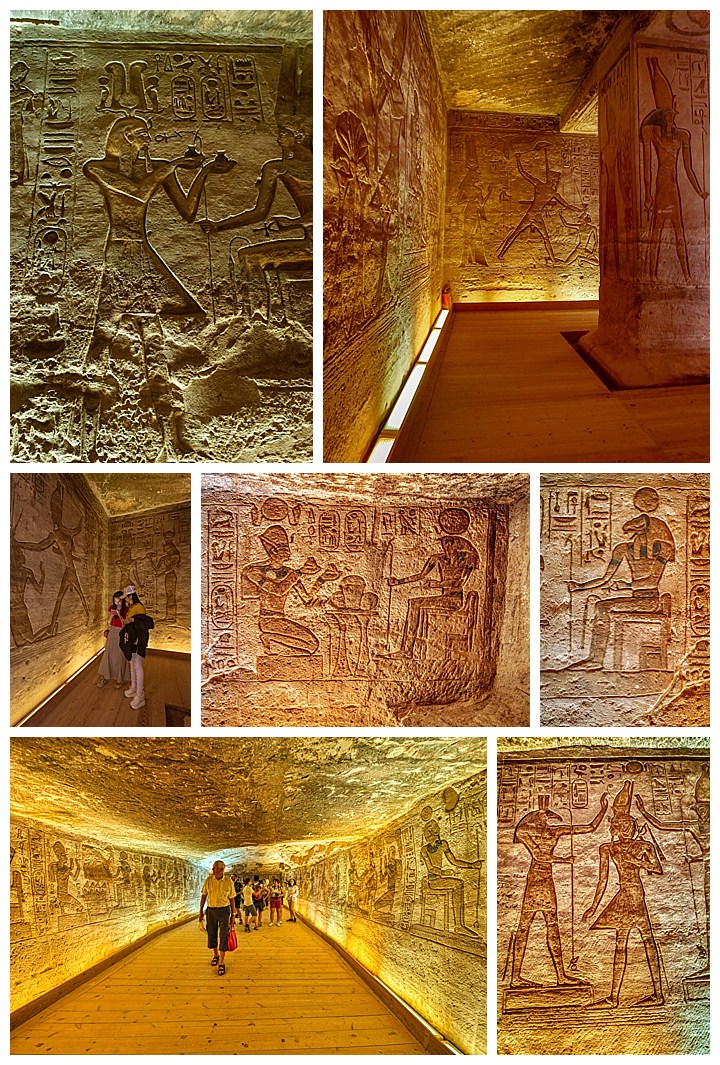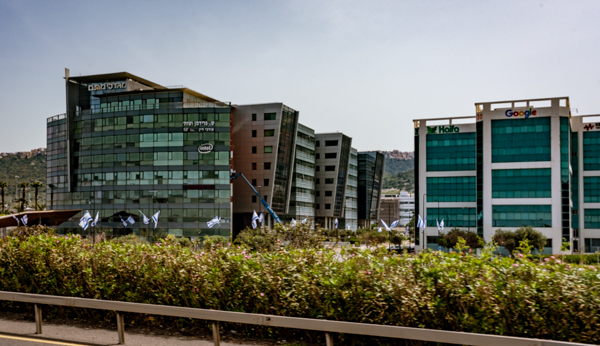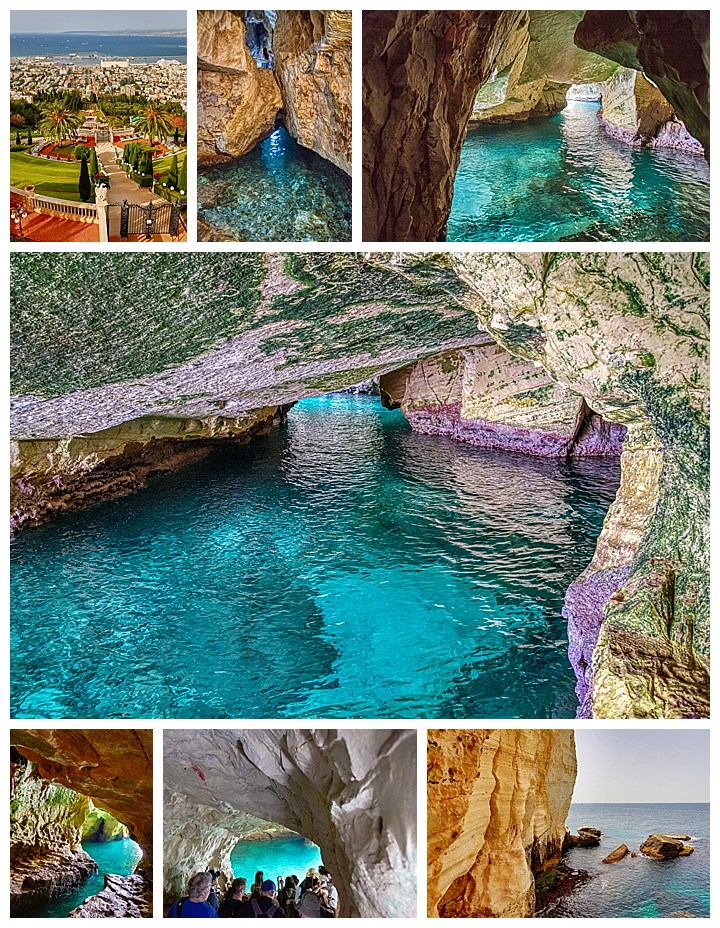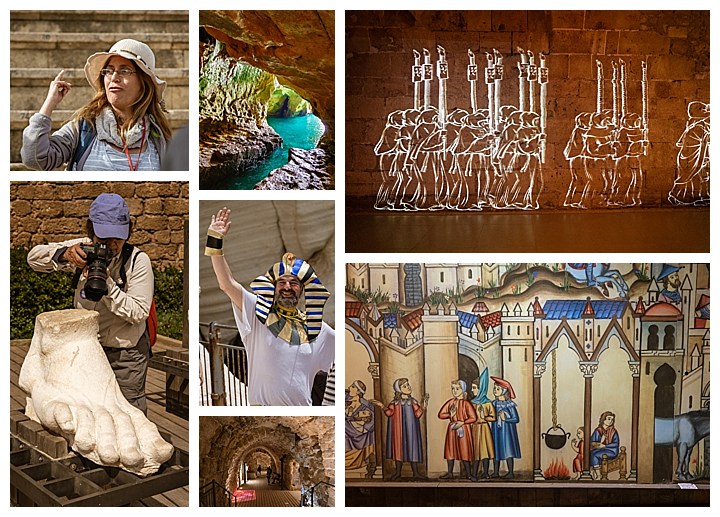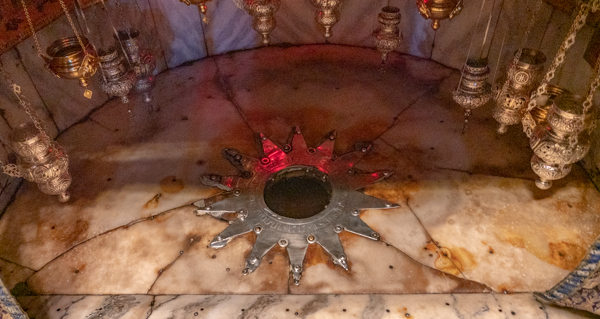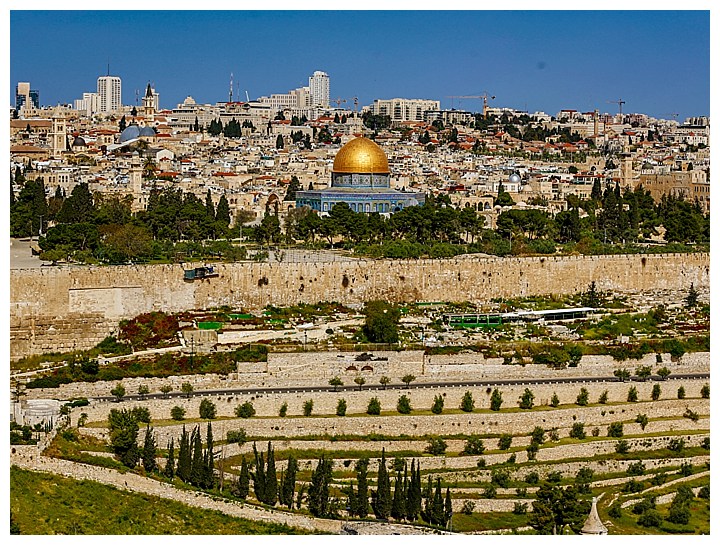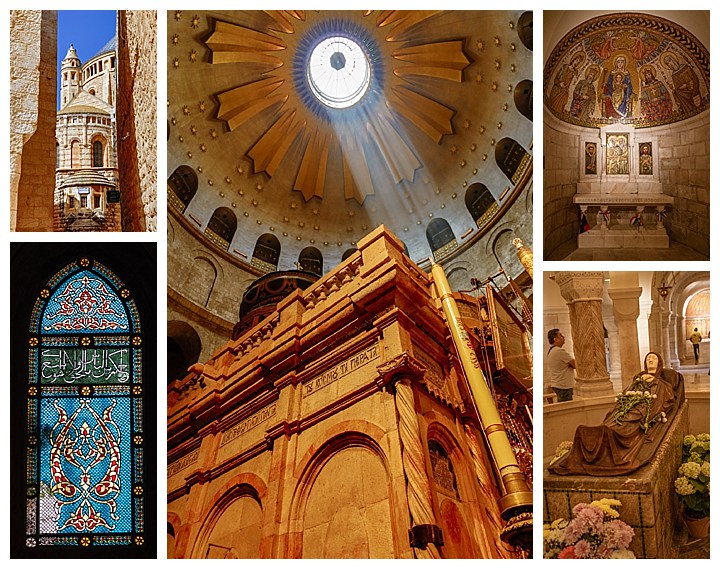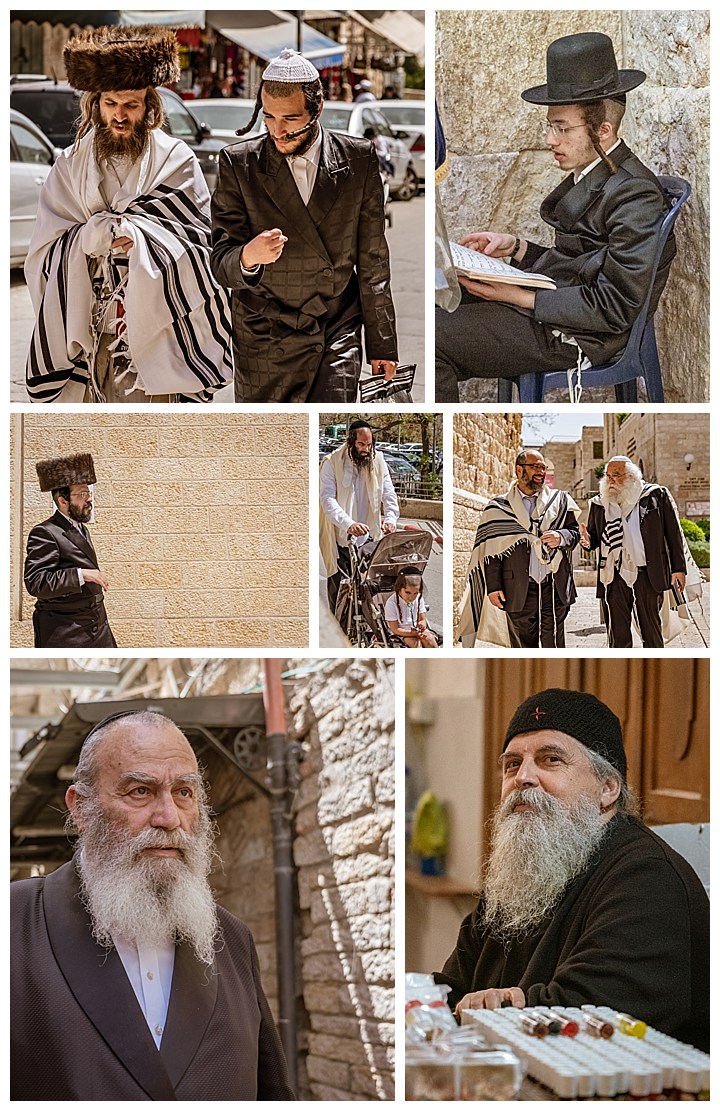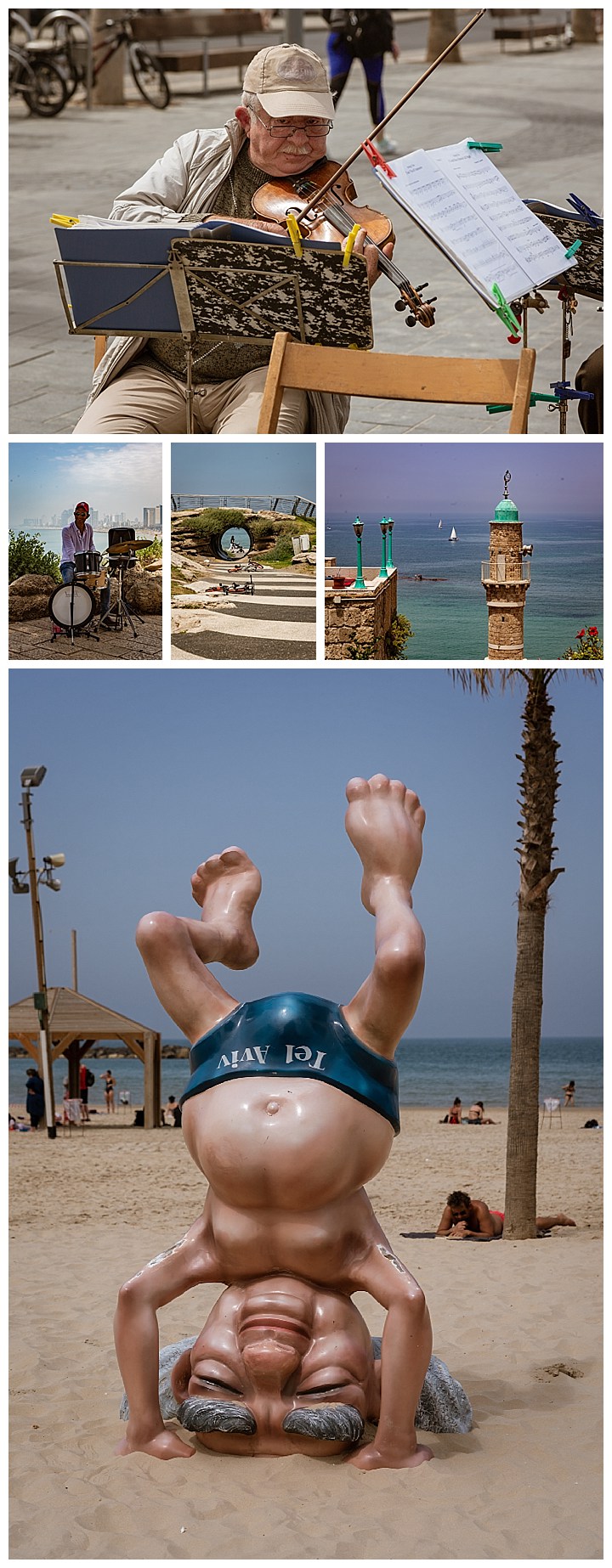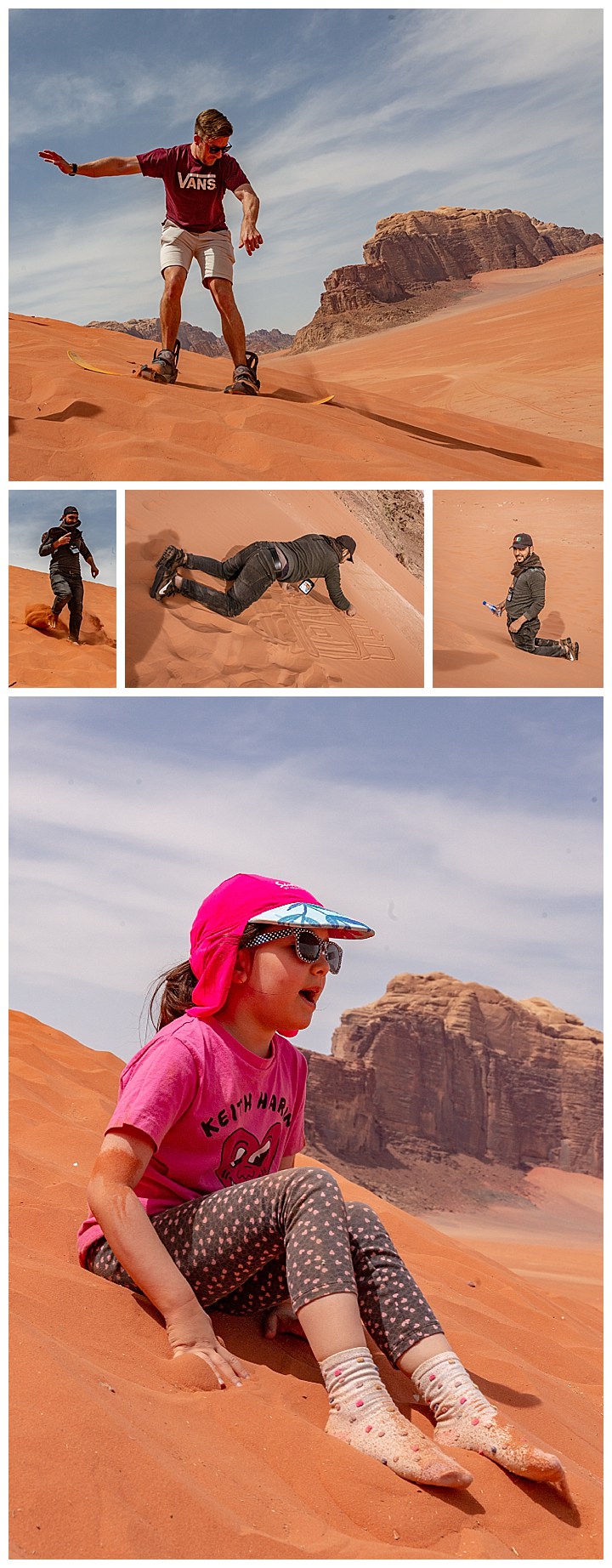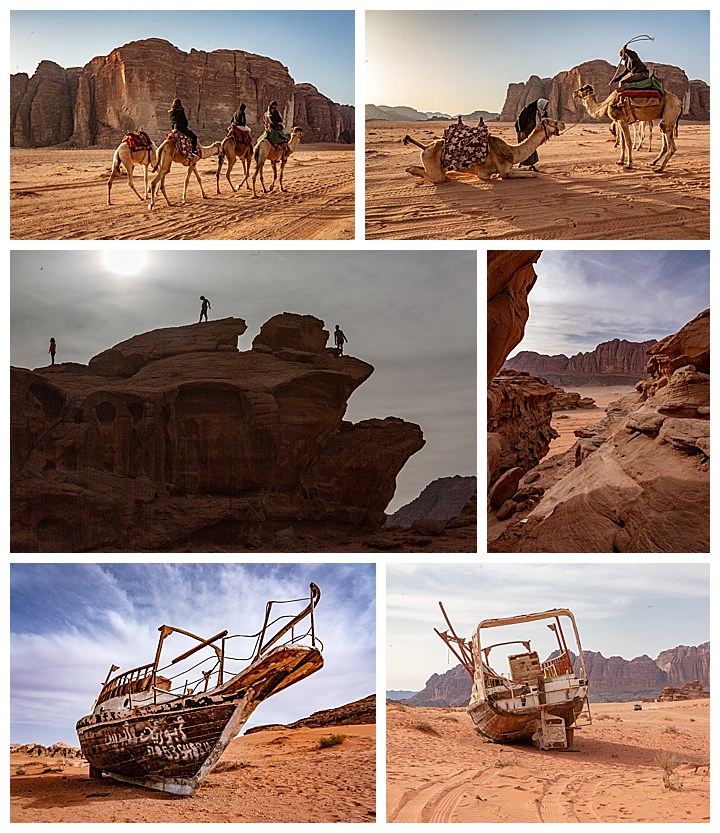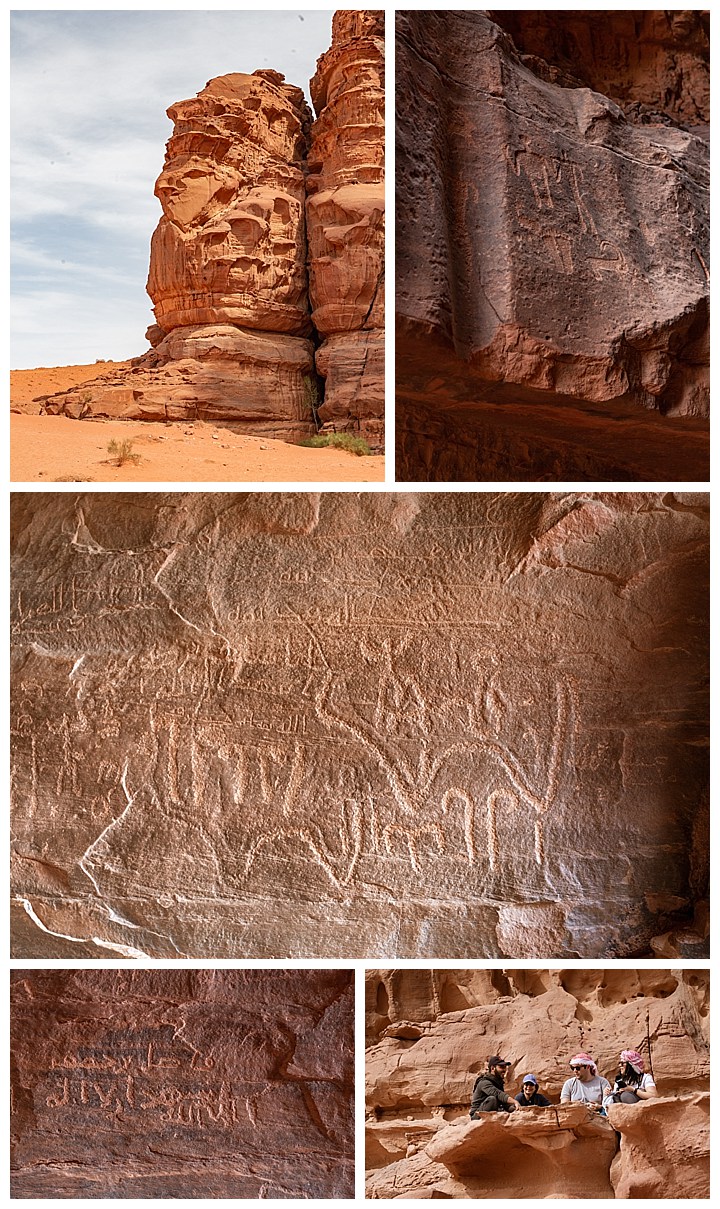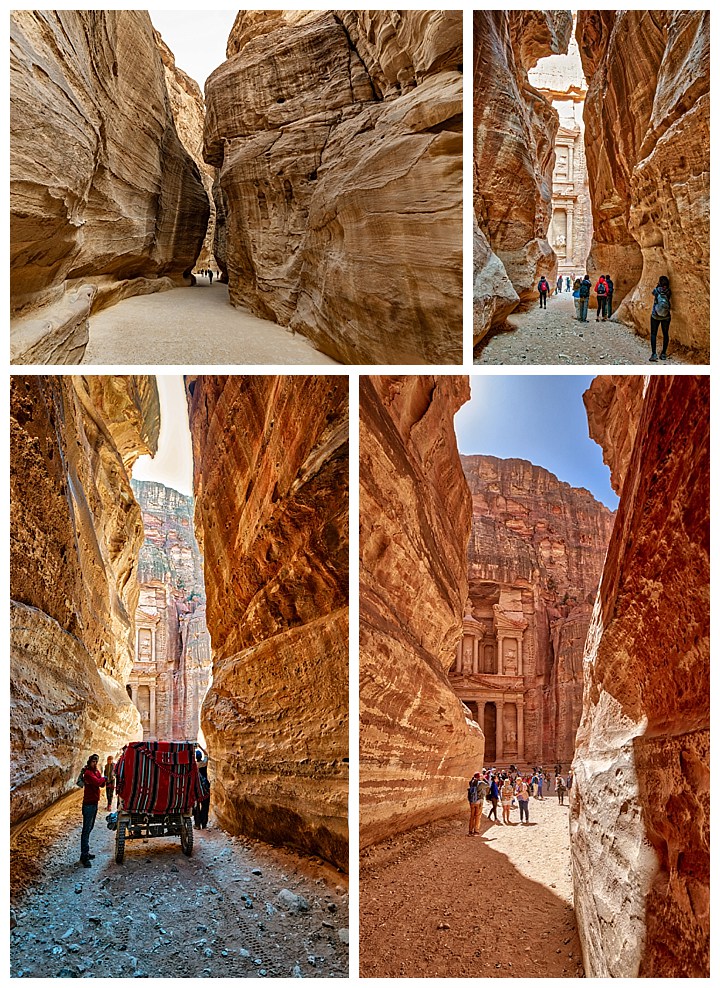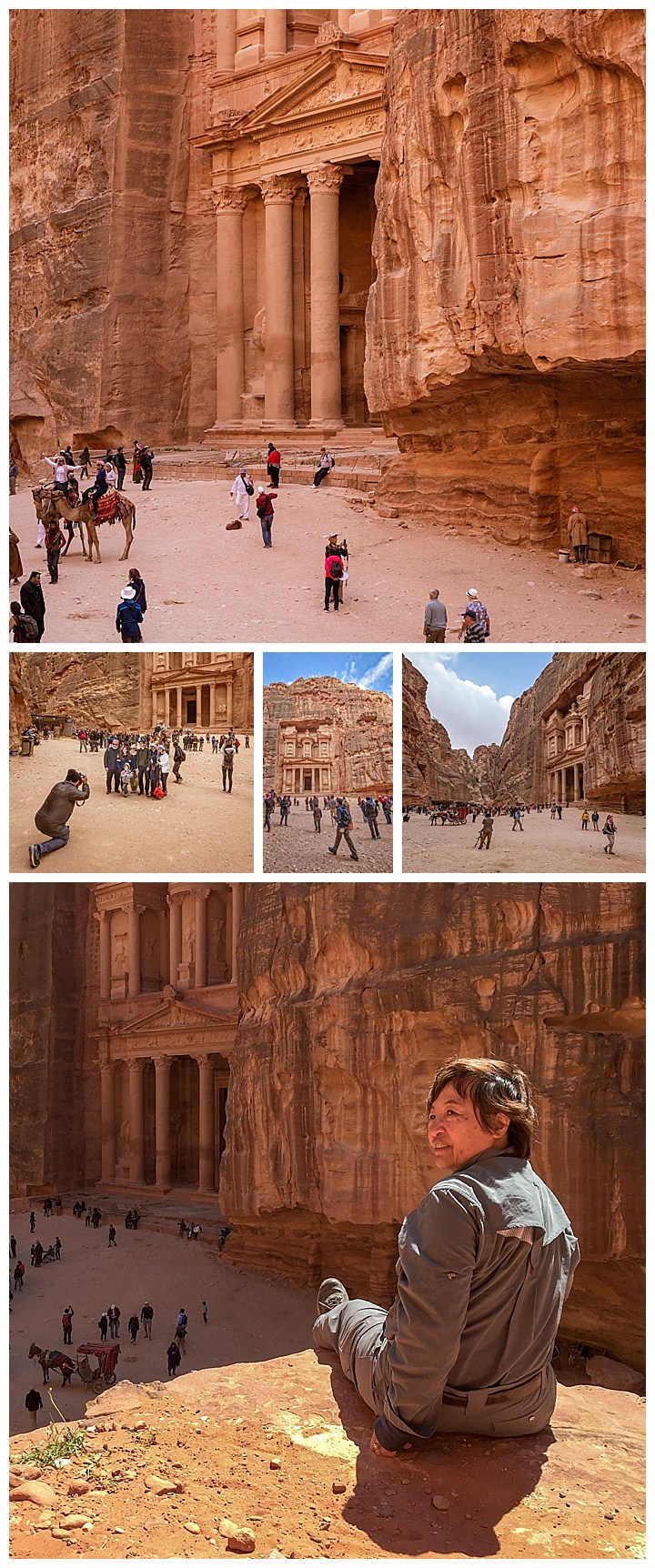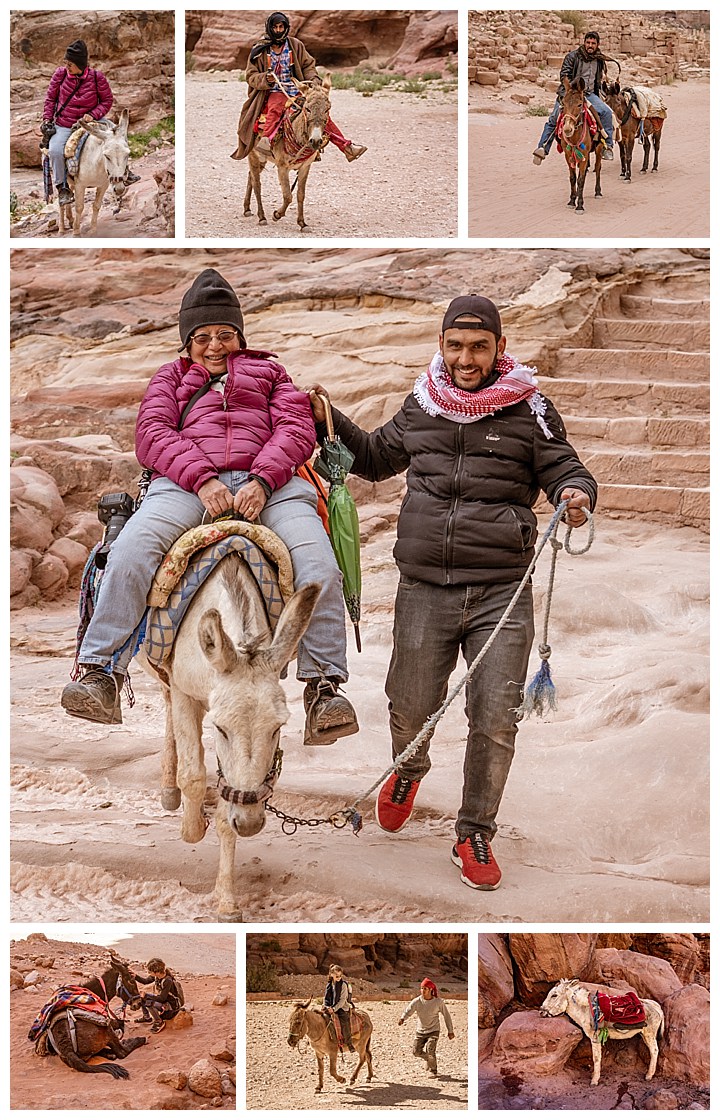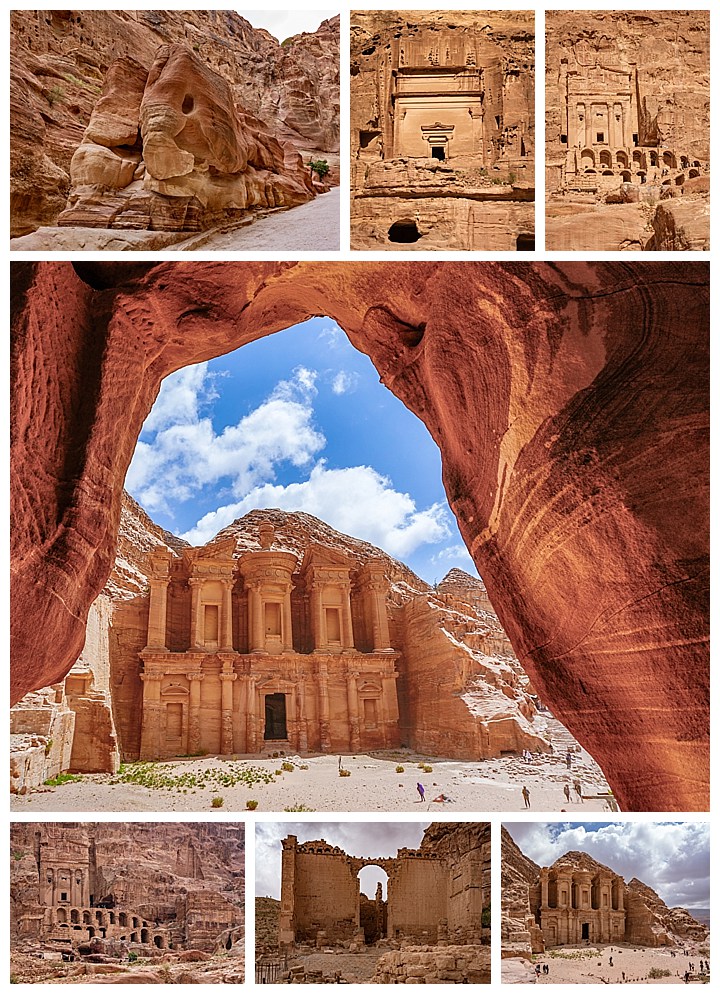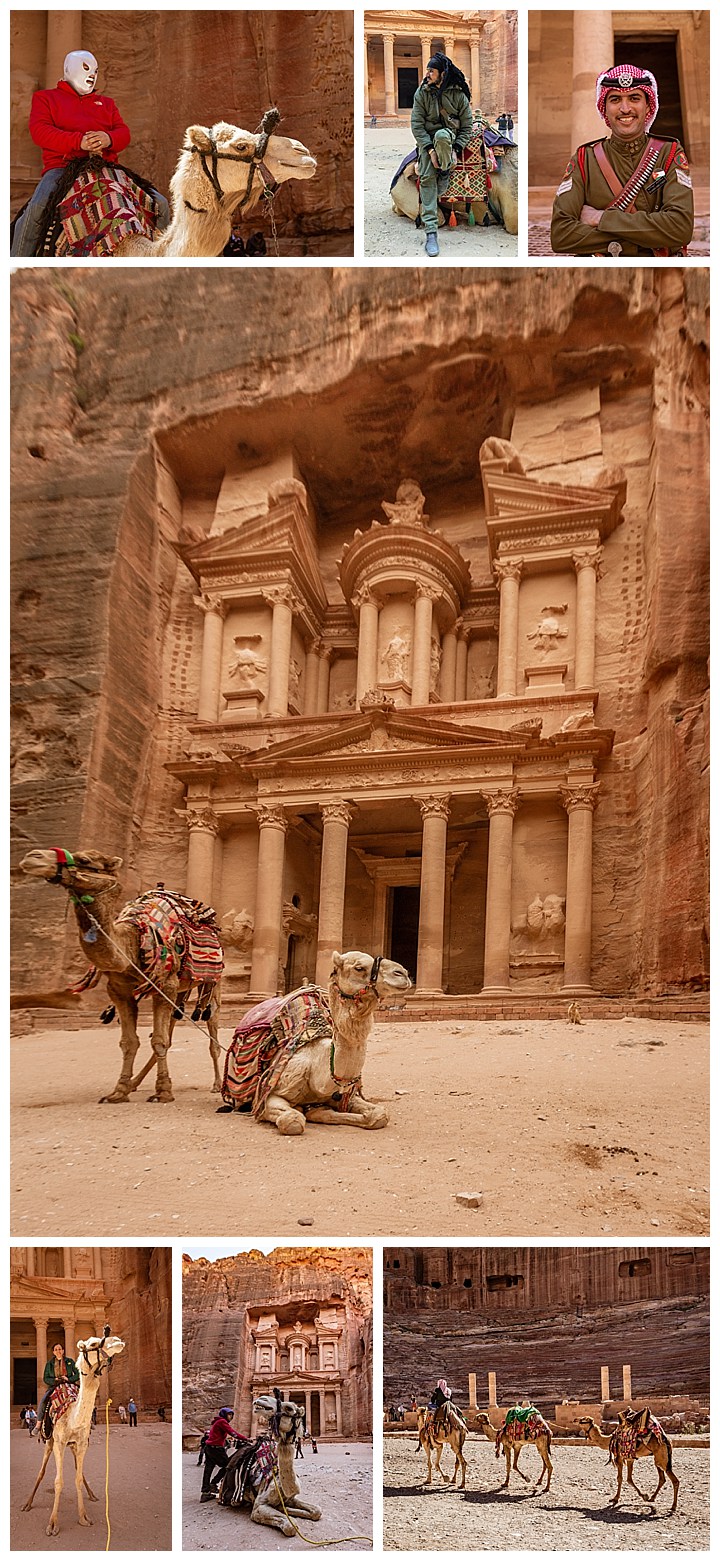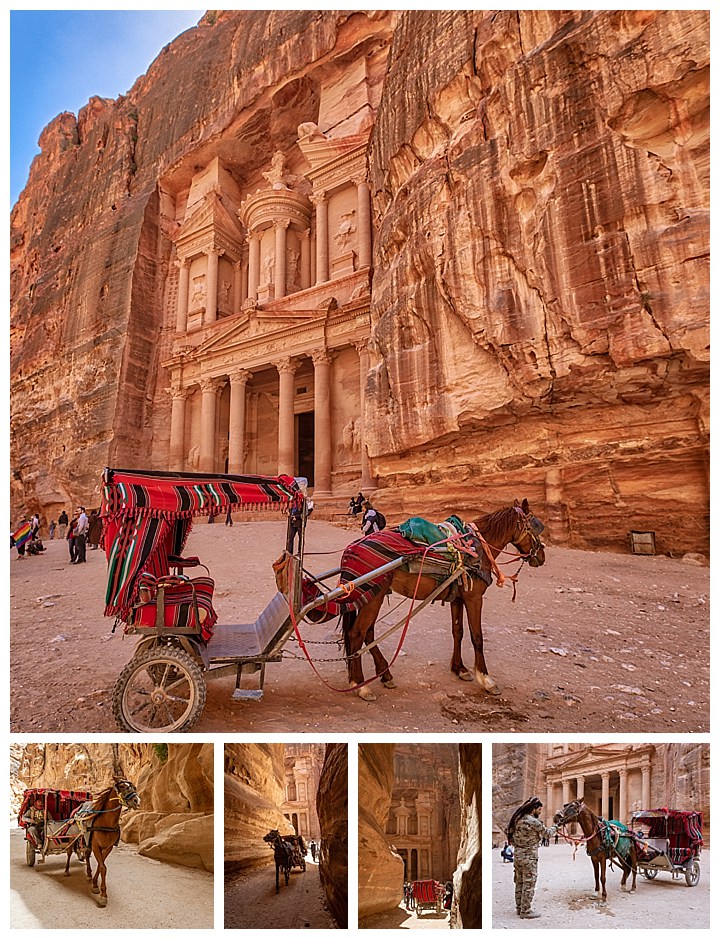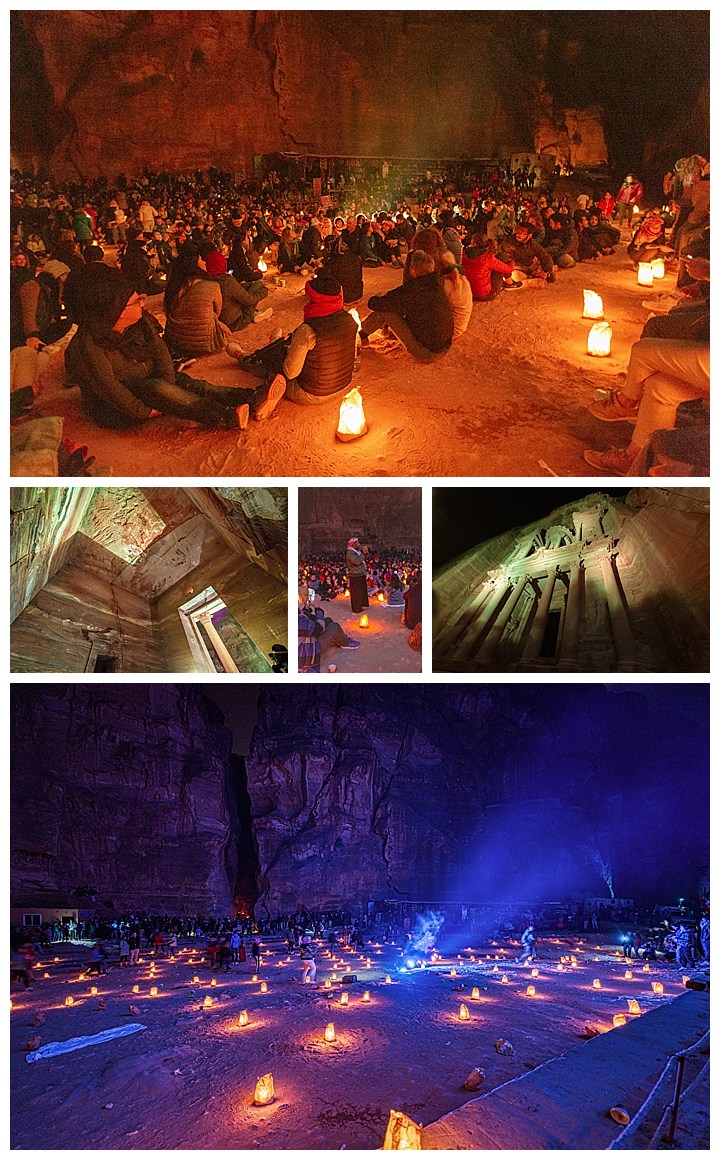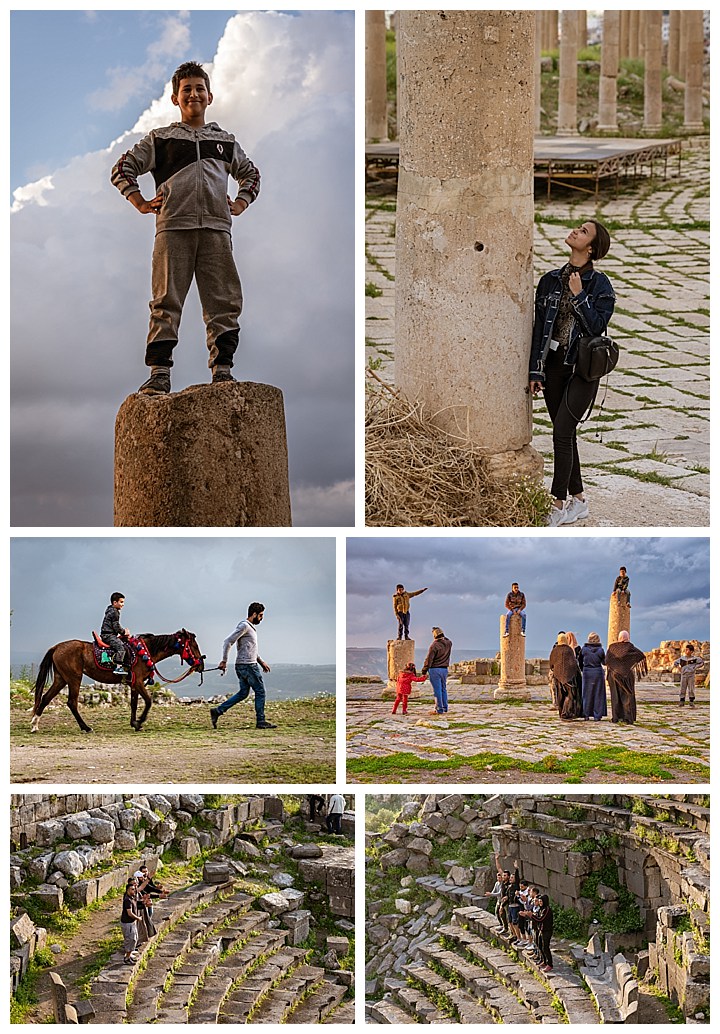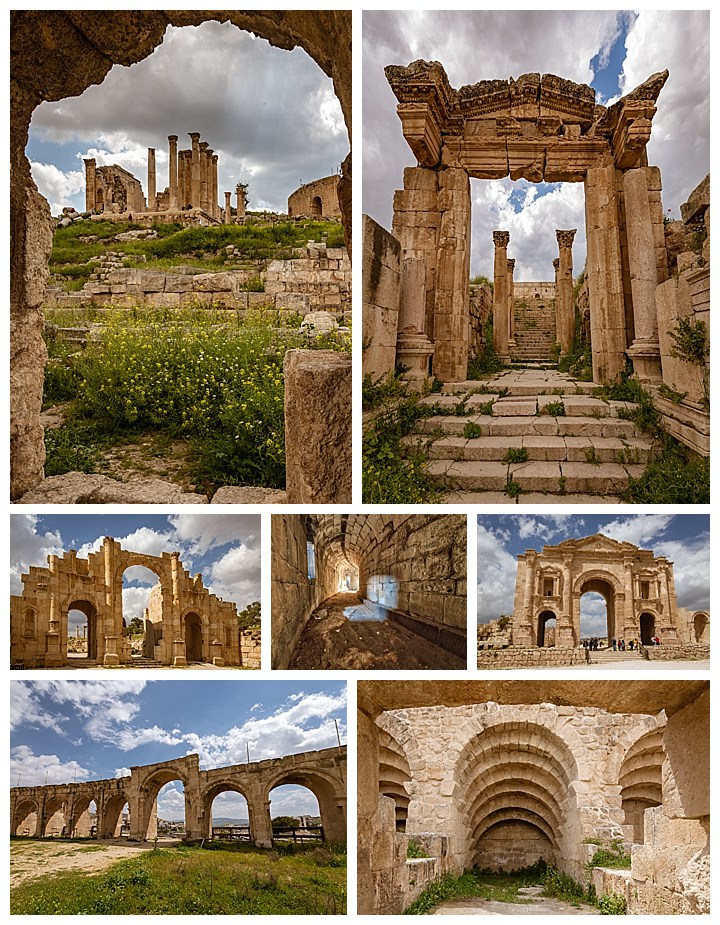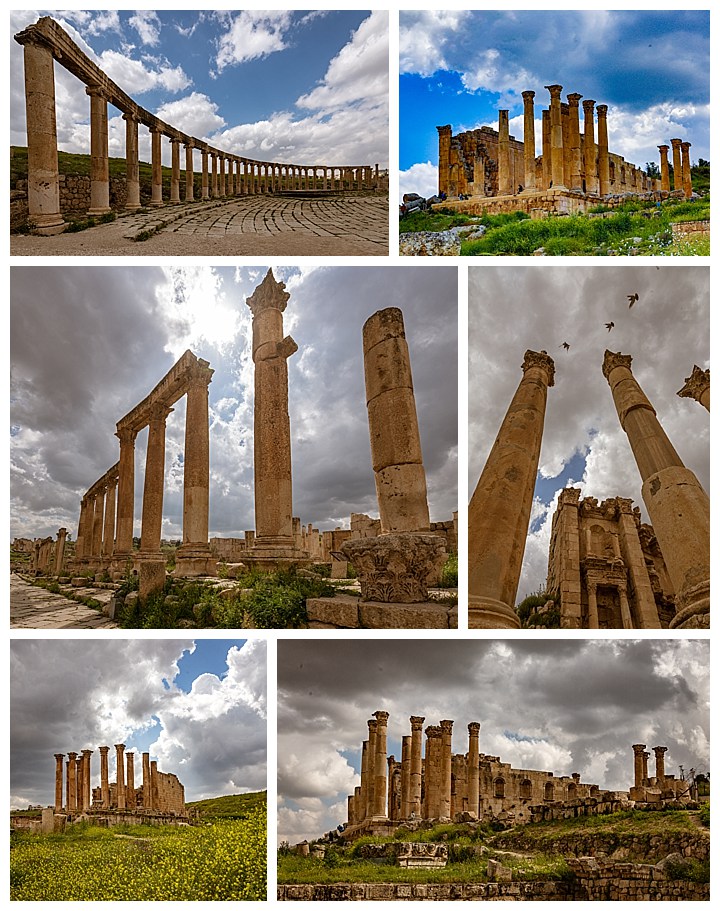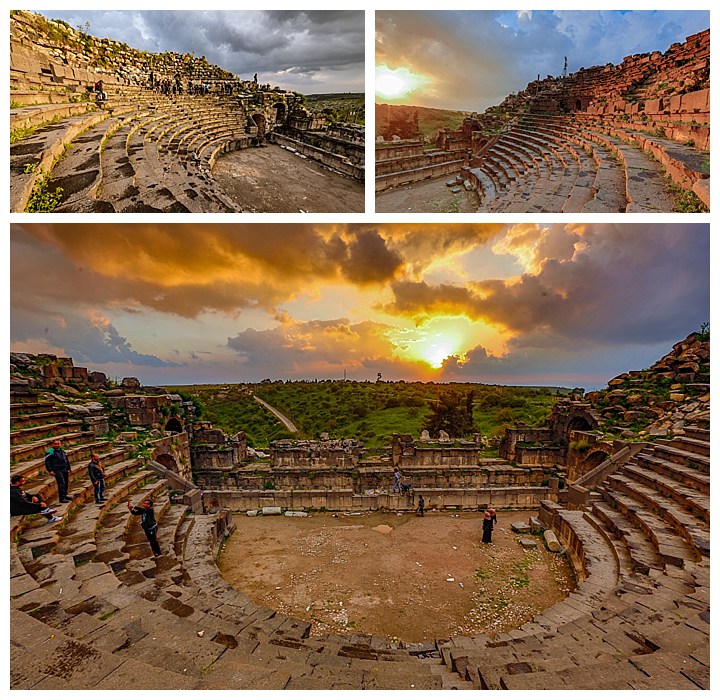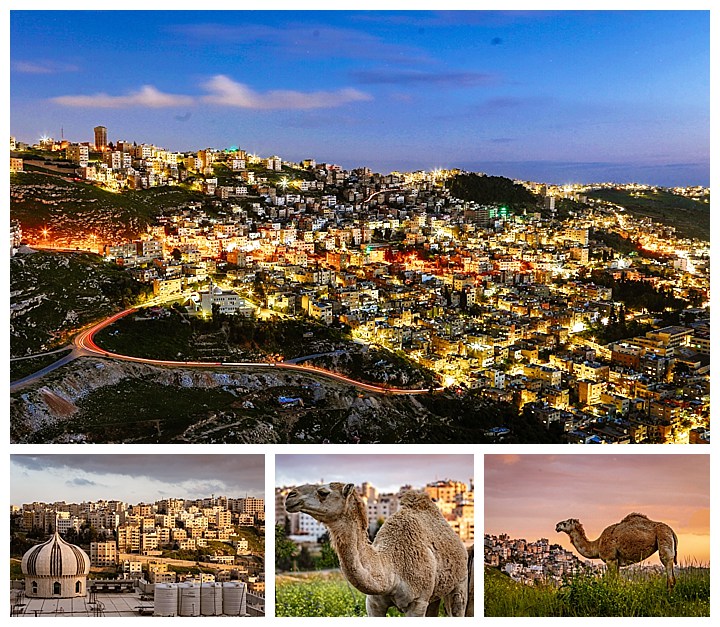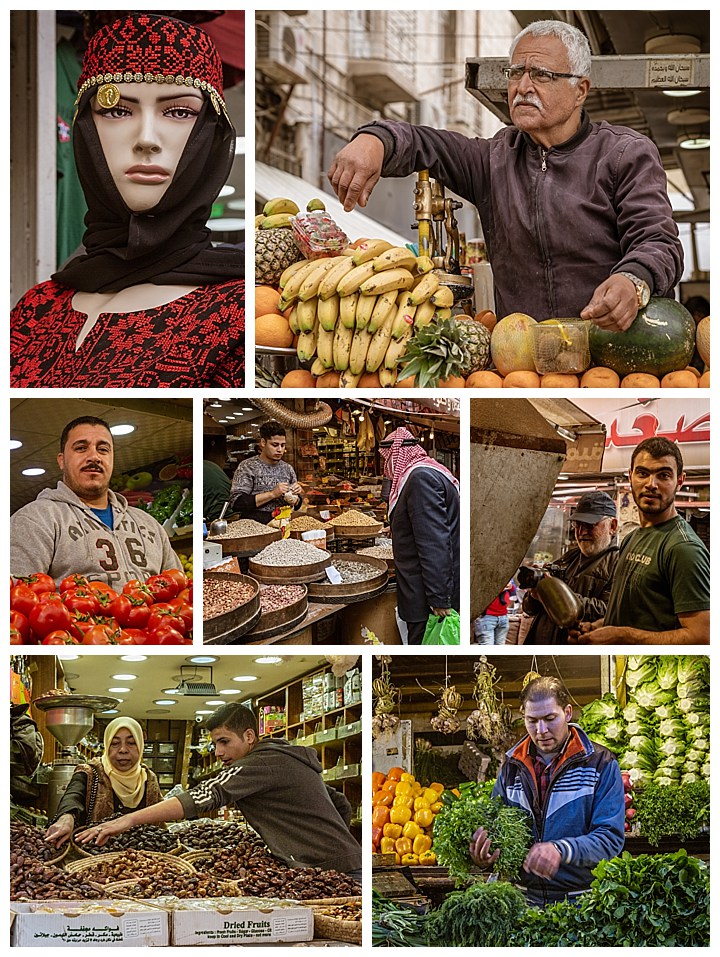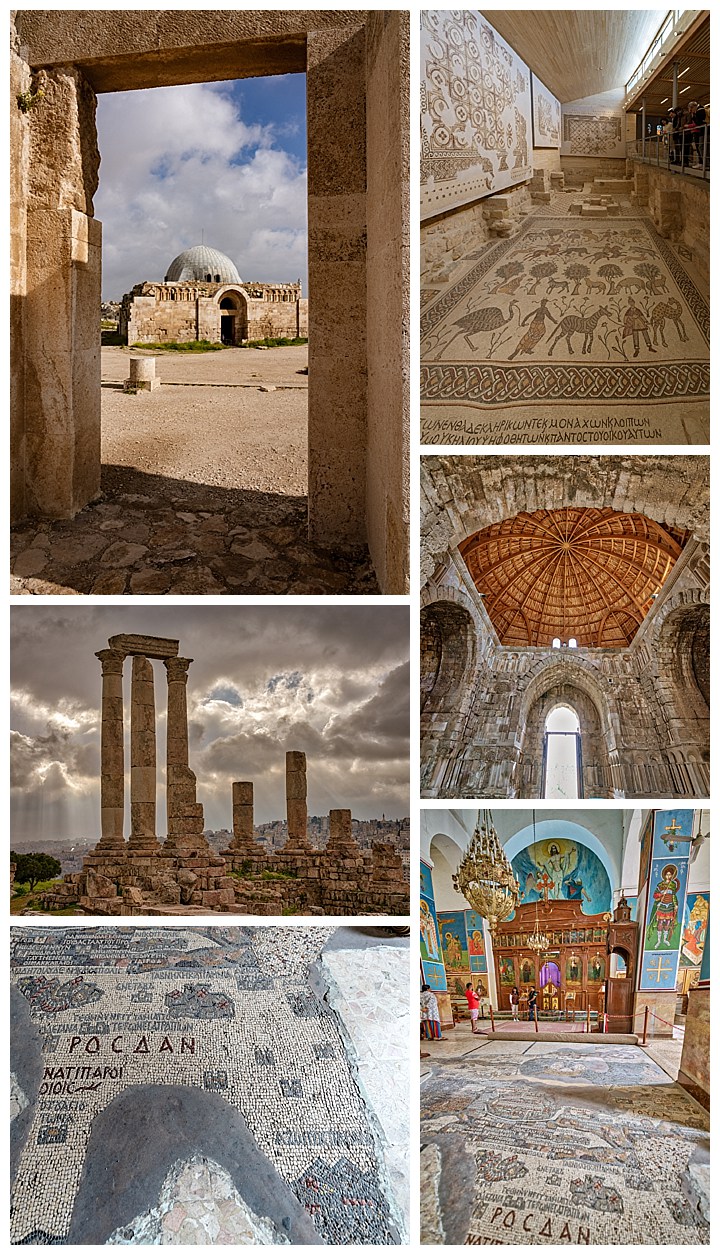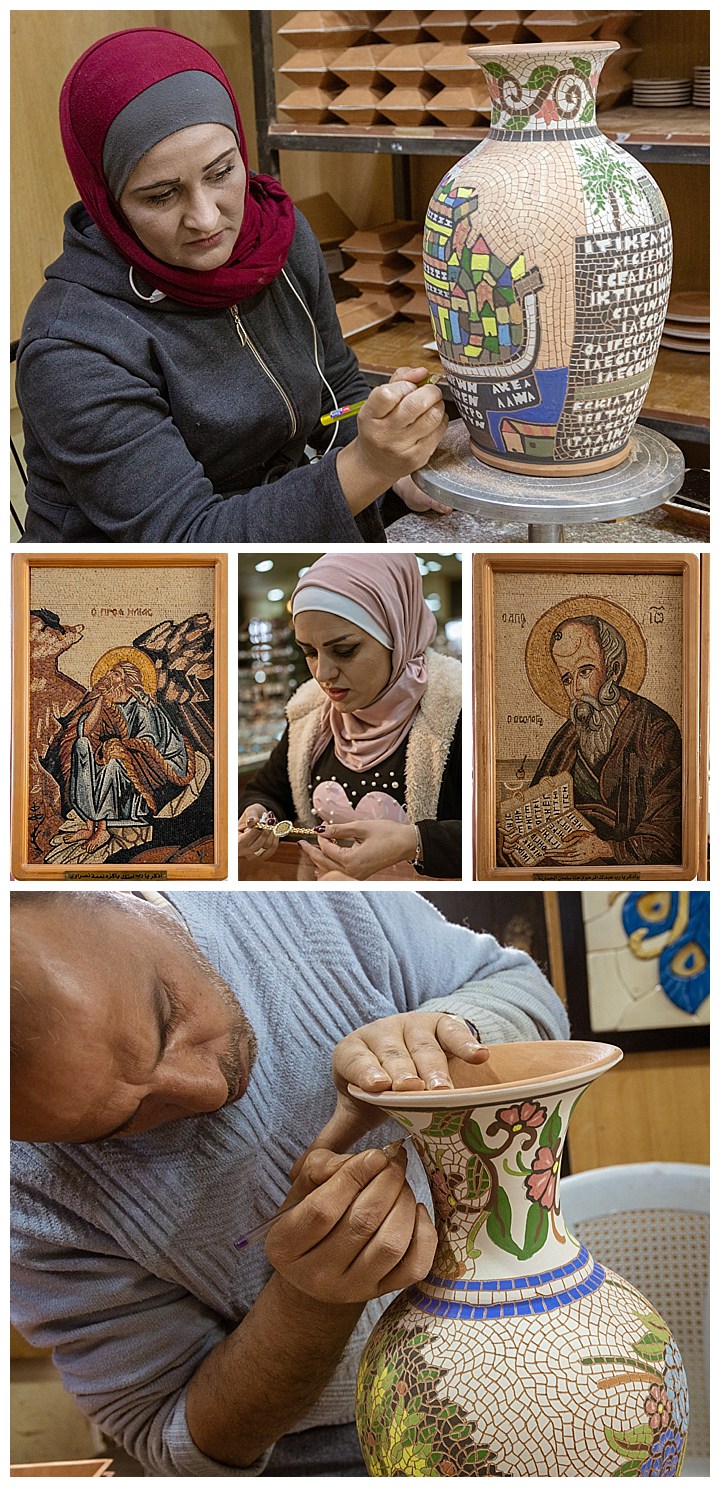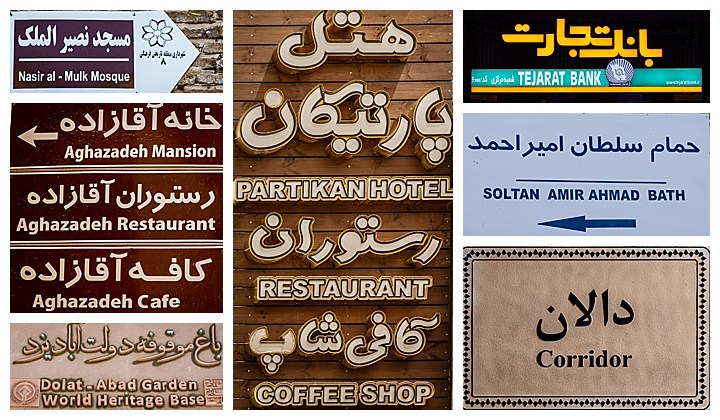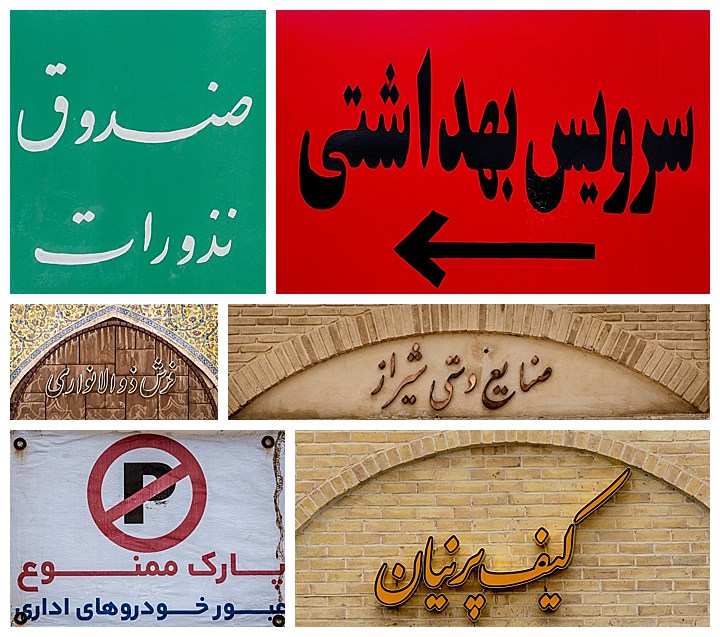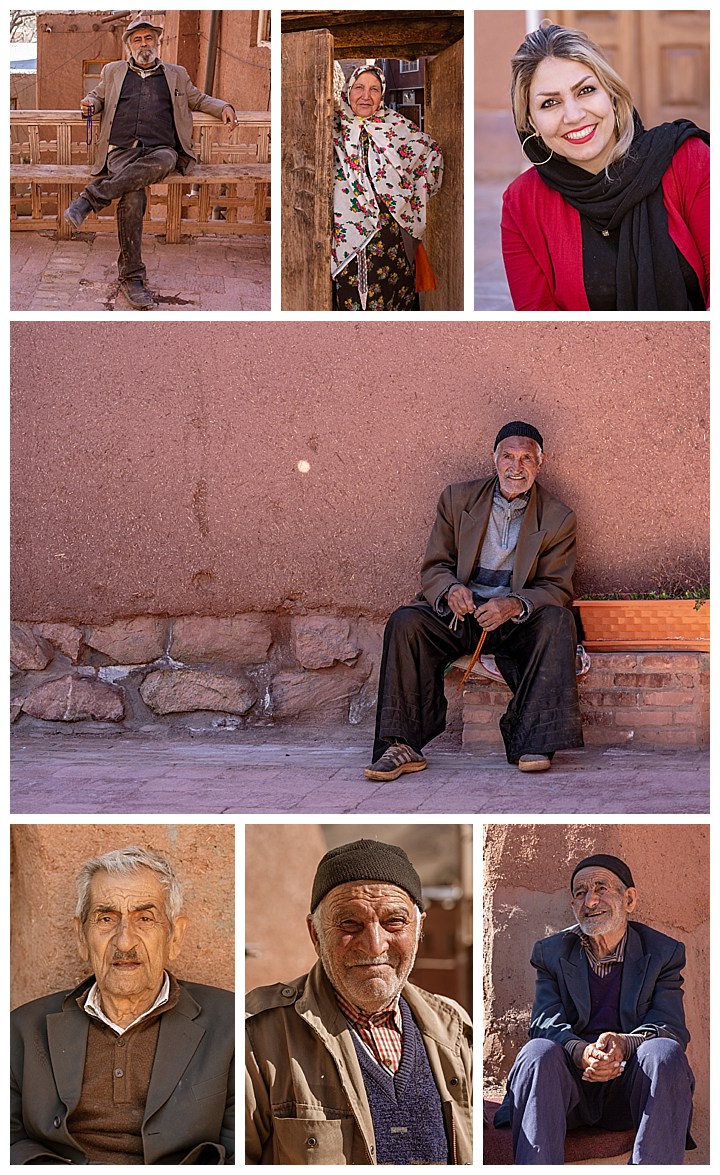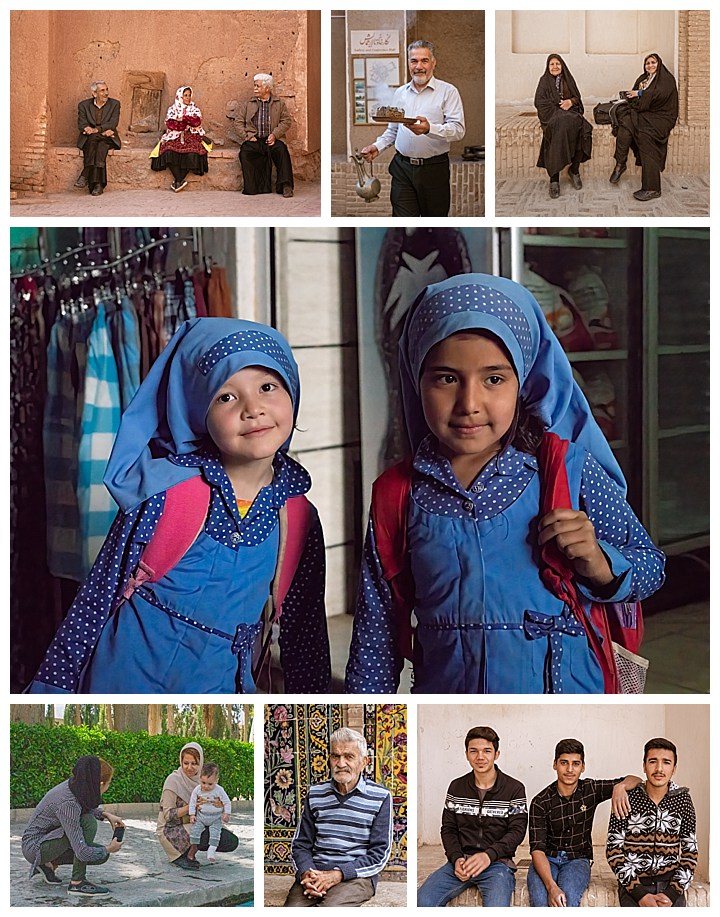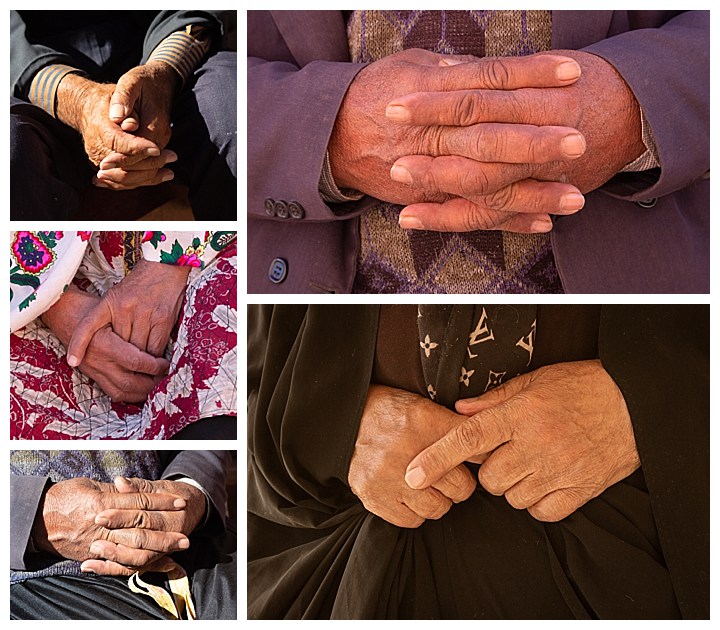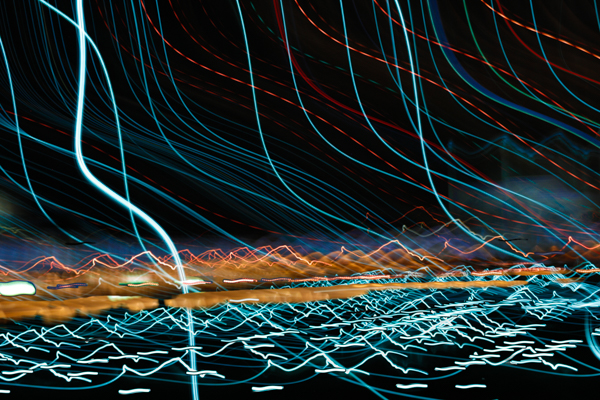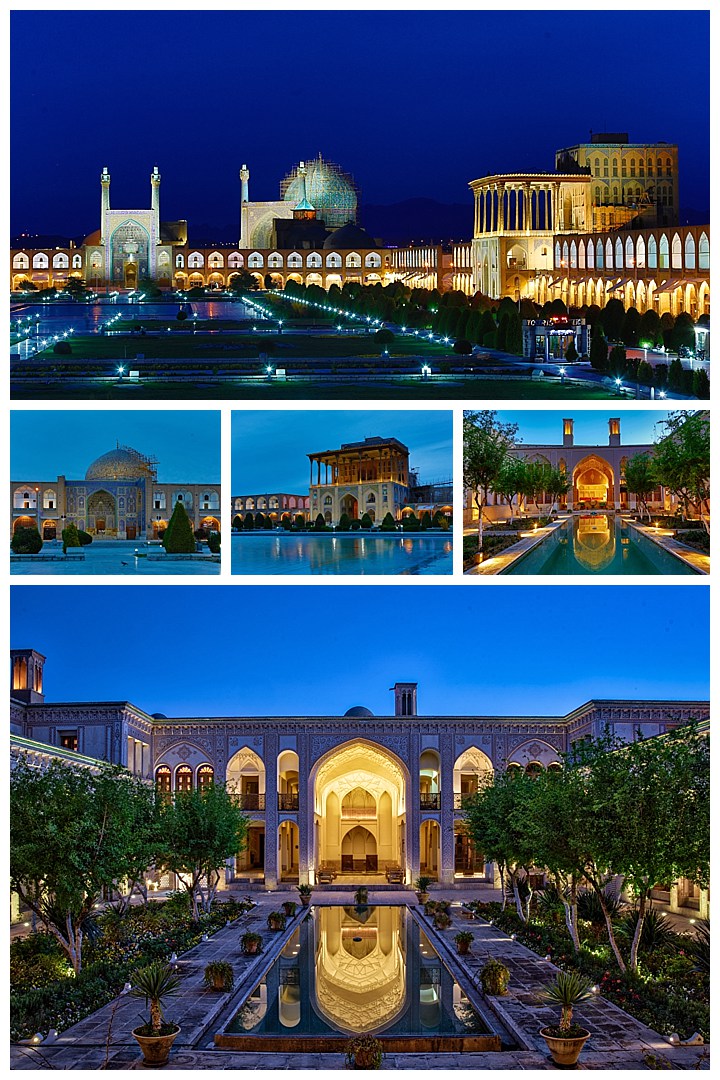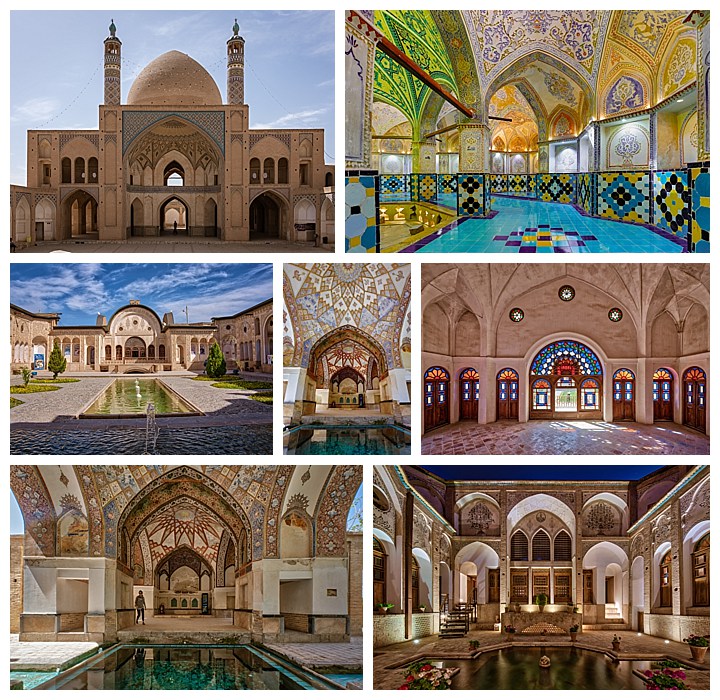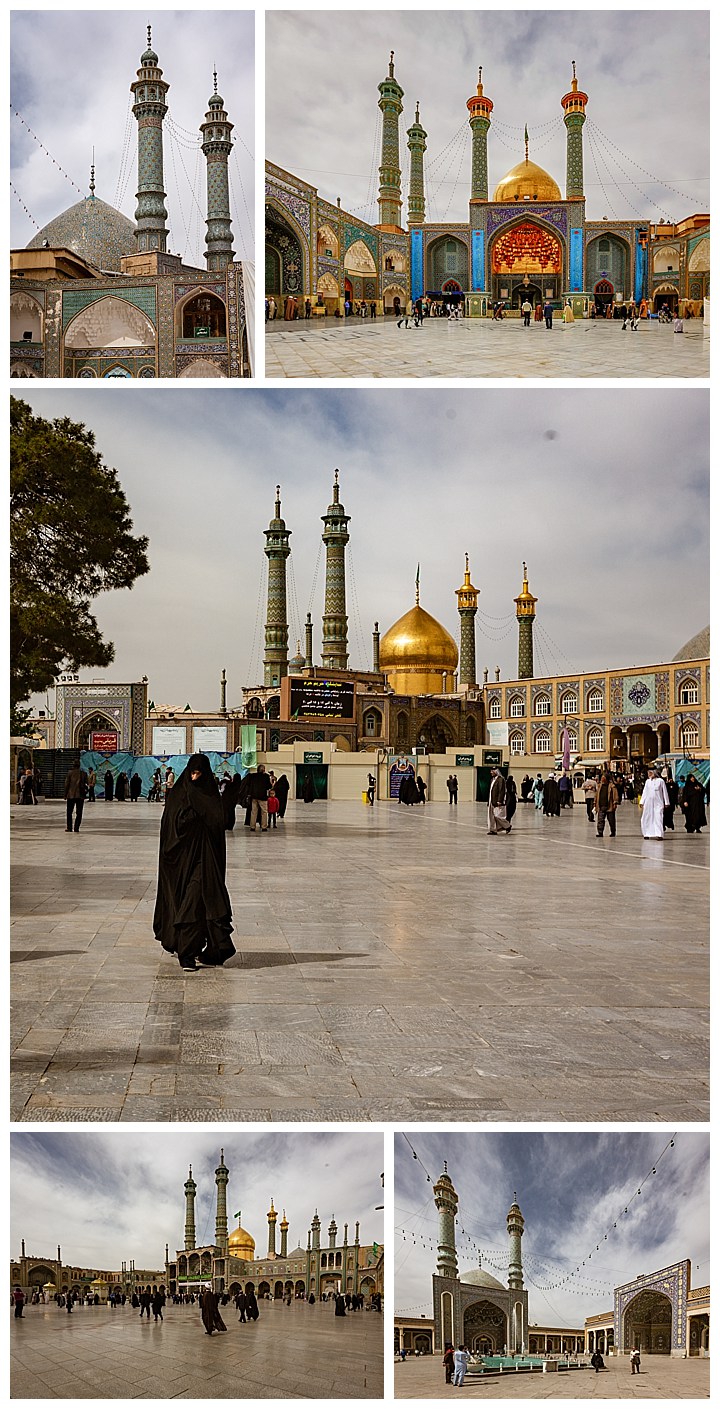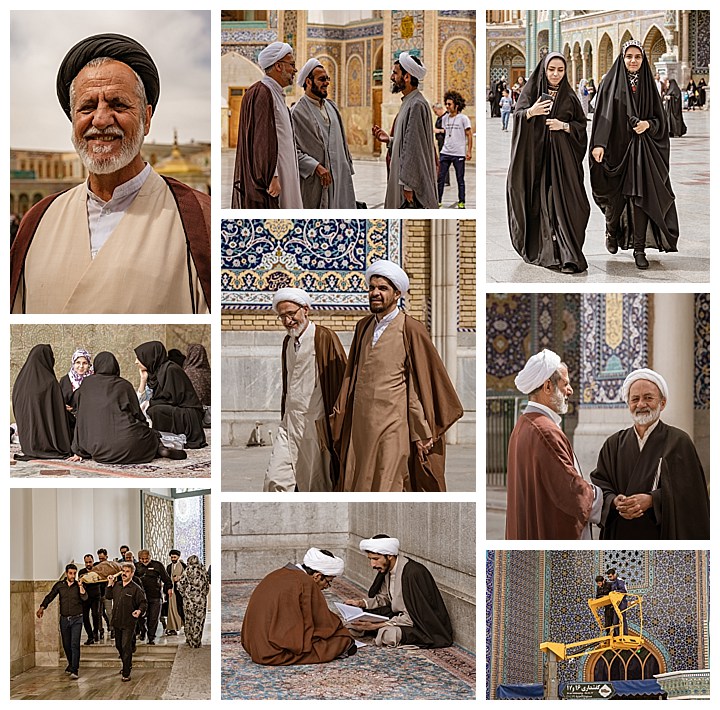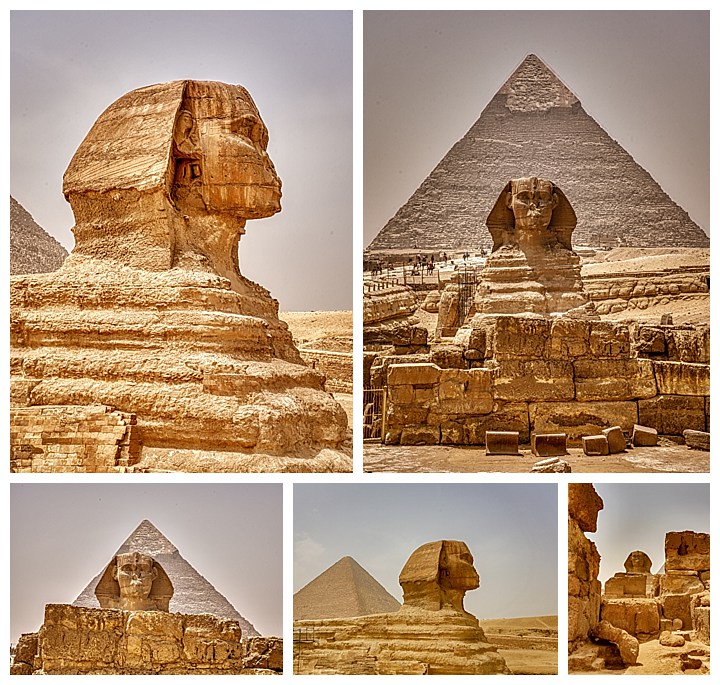
After riding the jarring overnight train from Luxor to Cairo, we were handed off to another guide, Hesham. He took us over to the site of the famous pyramids of Giza. At first blush, we were rather disappointed. The high local winds often blow the fine desert sand into the sky, creating a scene similar to intense pollution. Because of the dusty skies, the pyramids were nearly invisible, and appeared to be no more than a tourist trap with people selling horse carriage and camel rides. We were inundated with people wanting “money”, whether for souvenirs or rides. We were also disappointed that Cairo was filthy wherever we looked, with piles of trash on the sides of the roads, and the canals clogged with still more trash.
Fortunately a bit of Photoshop helps clean up these images, so that they look better than they did when facing them. Looking here, the sphinx comes to life more as we had expected to see that day.
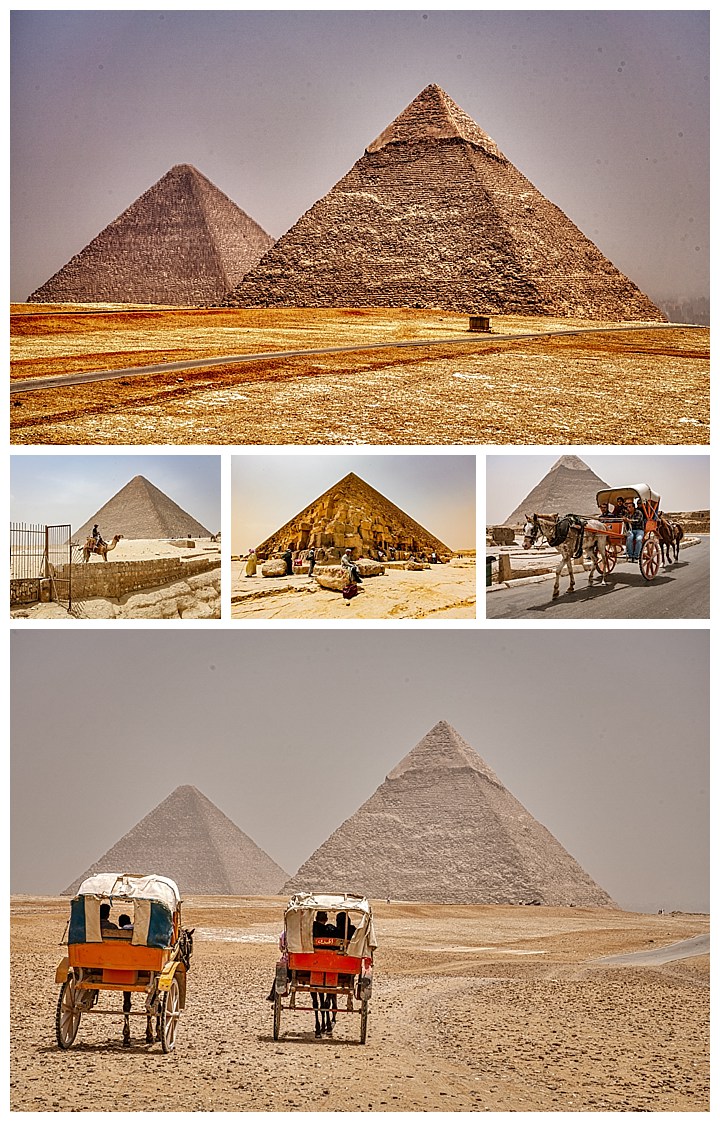
Photoshop continued to also make the pyramids more like what we had imagined. Remember that these were built starting 4,500 years ago, making them the oldest remaining relics of human history, created long before any mechanical assistance was available. They are the last remaining of the original Wonders of the World. The largest pyramid consists of over 2.5 million huge blocks of stone, and took over 20 years to build.
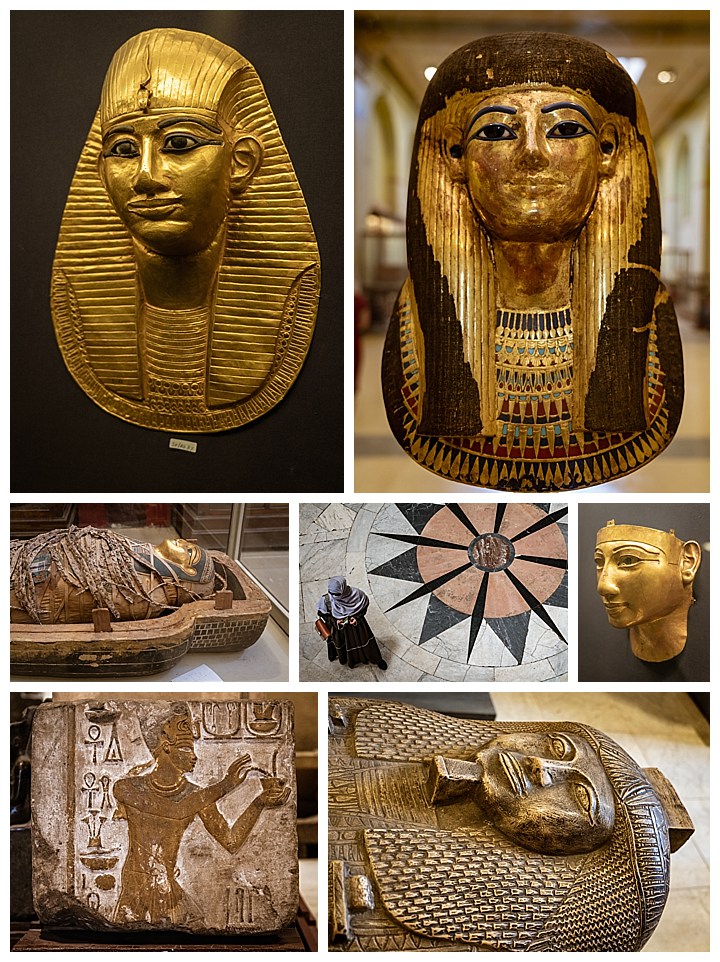
The Egyptian Museum in Cairo is a “must see” destination, to appreciate the findings of Howard Carter when he uncovered King Tut’s Tomb in the Valley of the Kings. Only about 25% of the objects are on display, while the rest of the contents from the tombs are still in storage. The huge volume on display boggles the mind at what was originally found intact. This was the largest Egyptian tomb ever found that had not first been invaded by grave robbers.
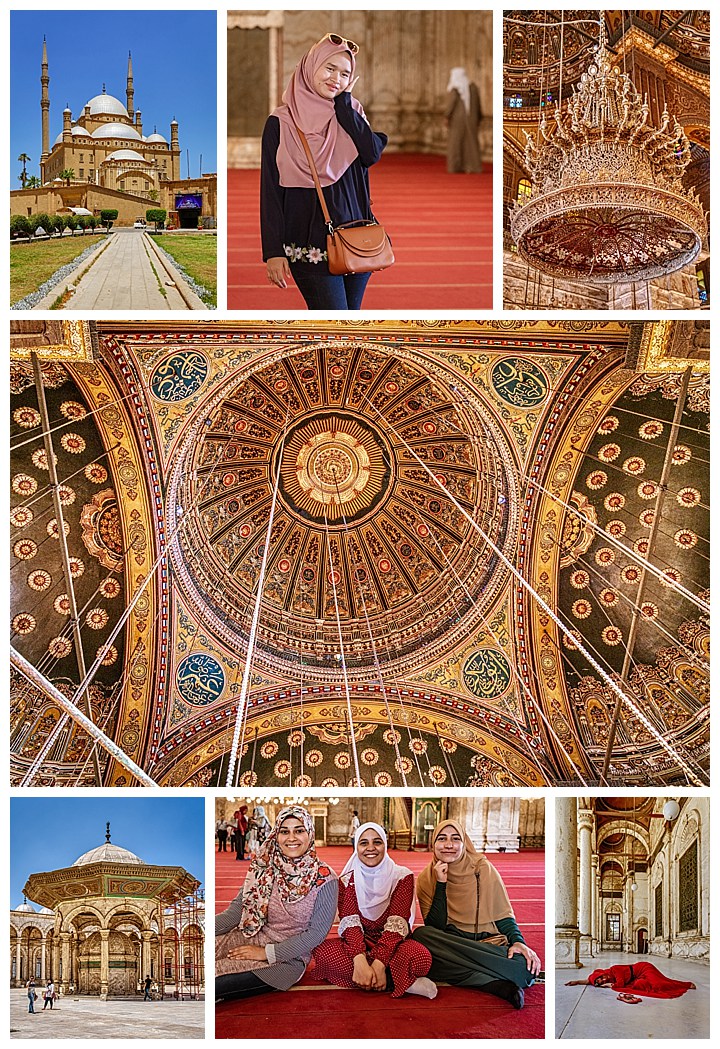
On our last day in Cairo, we visited the Citadel of Salah el-Din aka the Citadel Mosque of Mohammed Ali, part of a Unesco World Heritage site. Now that we were away from the tourist sites, we found the local Egyptians far more pleasant, willing to talk when English was available, and were not aggressive money grubbers.
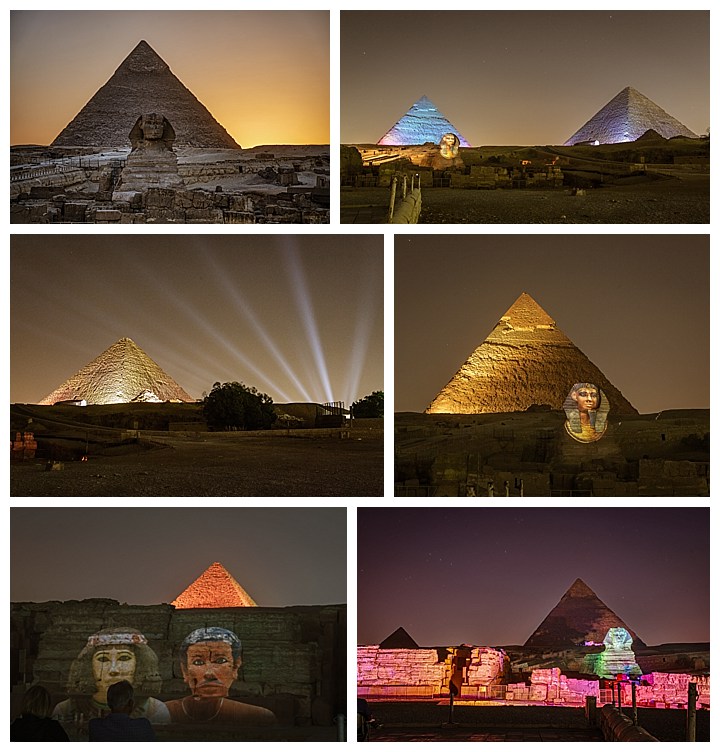
On our last evening in Cairo, we signed up to see our final Sound and Light Show at the Egyptian Pyramids. Adding this night show really helped us appreciate the history and value of the pyramids and the sphinx. Seeing this only by day would have been rather of a disappointment, particularly given the poor skies and weather we were experiencing.
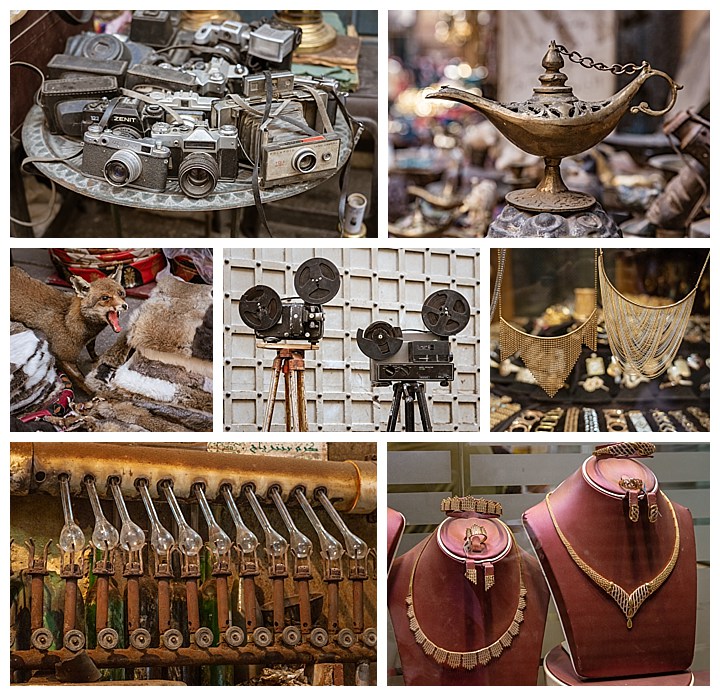
We like to always finish a country sequence with a series of photos of the people we met. As it happens, in Egypt, those people were almost entirely found in the local souk in Old Cairo, the Khan el Khalili bazaar. This bazaar was full of tiny alleys, with hundreds of vendors, where you could explore for hours. As with the mosque, once we were away from the standard tourist traps of pyramids and temples, the local people came alive and became our fast friends.
Being an ancient bazaar, it was also loaded with an amazing assortment of stuff for sale. One vendor was selling antique cameras (upper-left) and video projectors (center). I was tempted to buy “the original Aladdin’s Lamp” (as the vendor jokingly referred to it — top-right), but I was pretty sure the three wishes were already used up… ☺
One vendor was selling animal furs as rugs, and had a stuffed fox on hand to emphasize the quality of the fur (center-left). There was plenty of gold jewelry for sale (center-right and lower-right), and one man had a strange set of flasks coming out of a brass tube (lower-left) that was somehow related to making jewelry. Though the vendor was pleasant, he did not speak enough English to explain its operation to us.
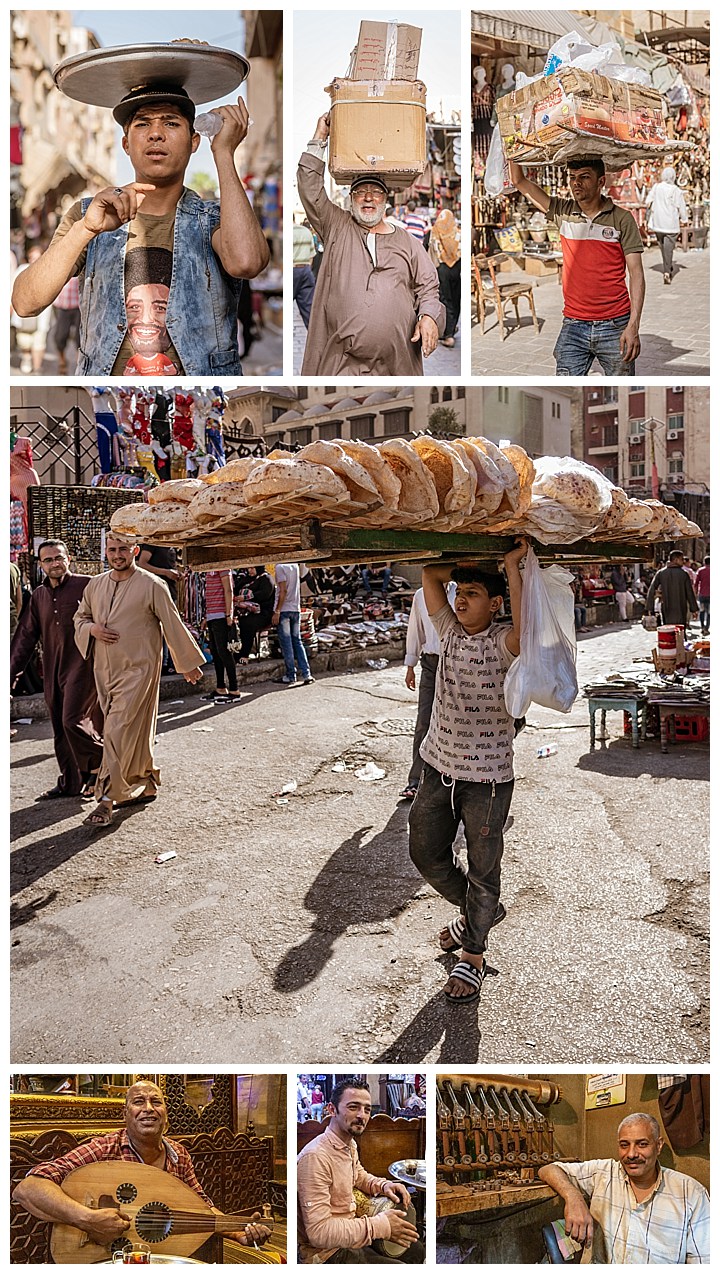
At the local cafes, you can still hear musicians, as they’re sipping tea or coffee (lower-left and lower-center). People here are going about their daily business, selling to each other, and not searching for the next tourist. As Americans, we find it amazing how often people carry their bundles on their heads, as seen in the top two rows above. Note the man in the lower-right is the jewelry maker with his bizarre flask / bronze tube contraption. This was one of those times I wish I had allowed a local guide to tag along as a translator. How the devil does that thing work???
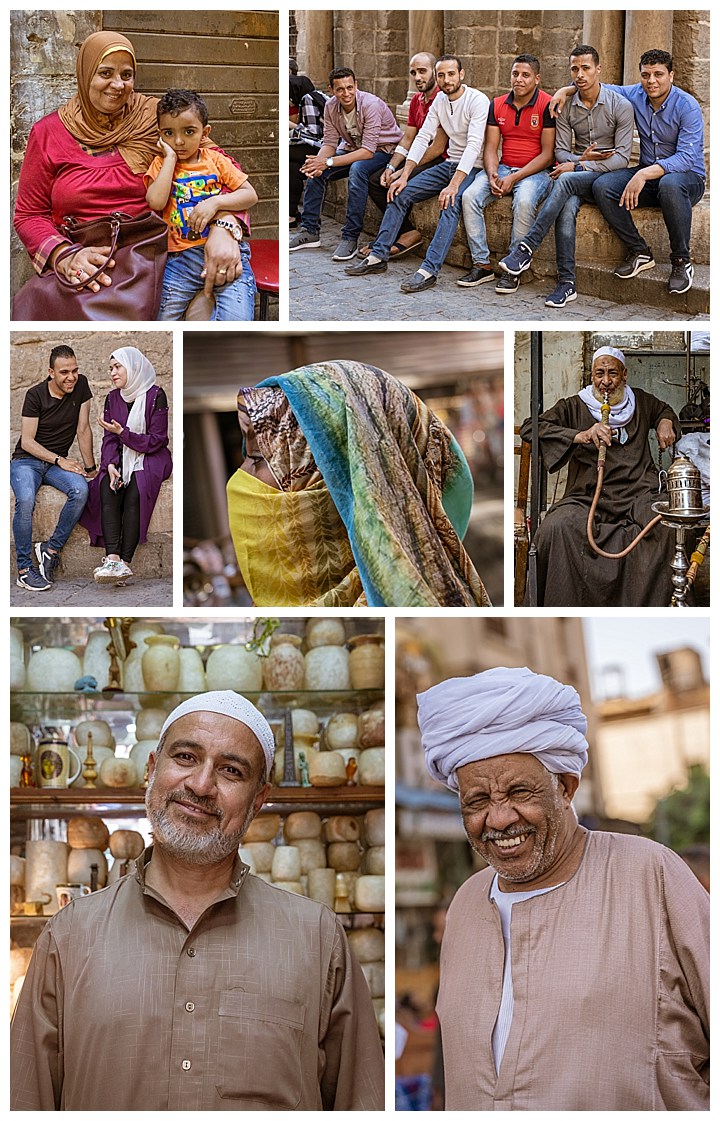
The bazaar created a very pleasant way to end both our Egyptian tour, and the last ten weeks traveling through six countries. While there were times we wondered if we were crazy to cram so much in, it was days like this that made us happy that we never skimped or missed the days of meeting the people residing in each country.
